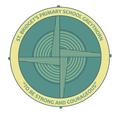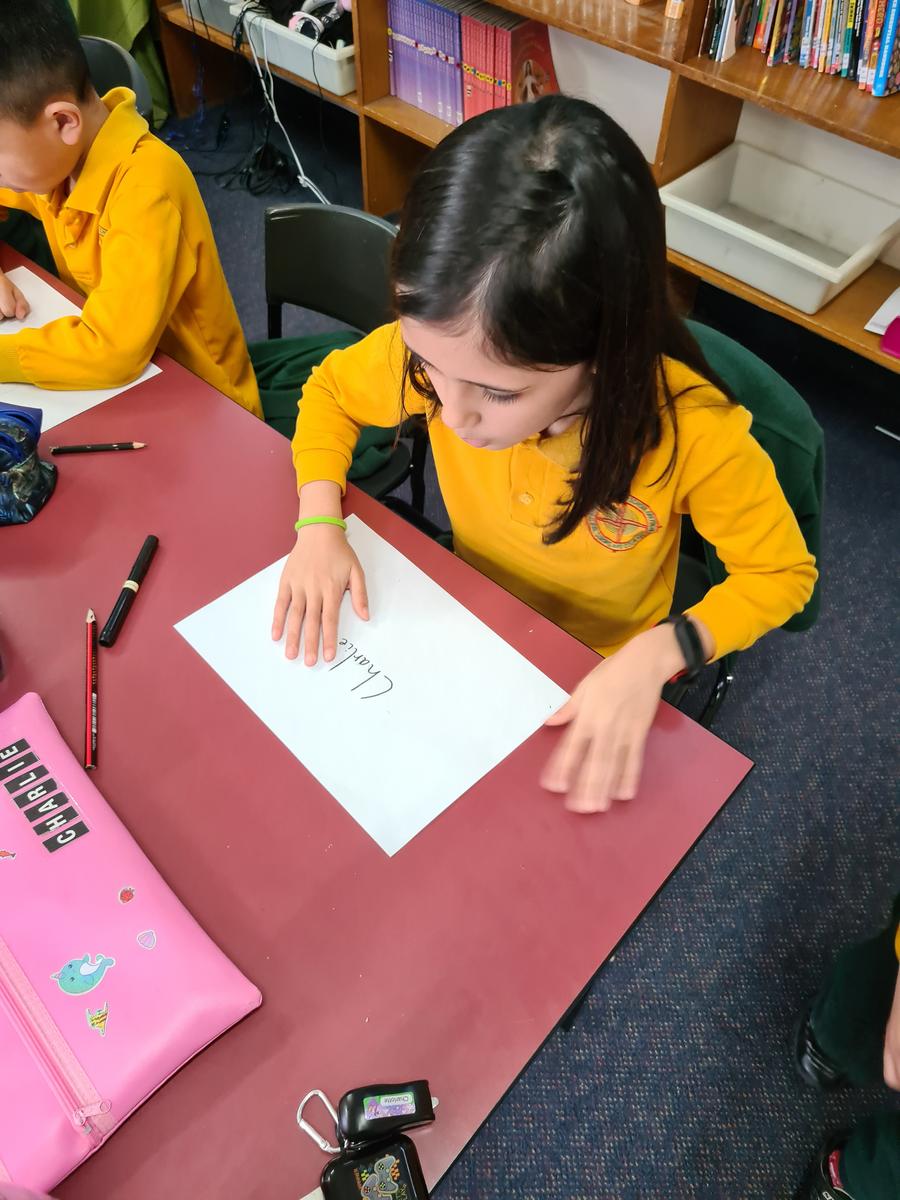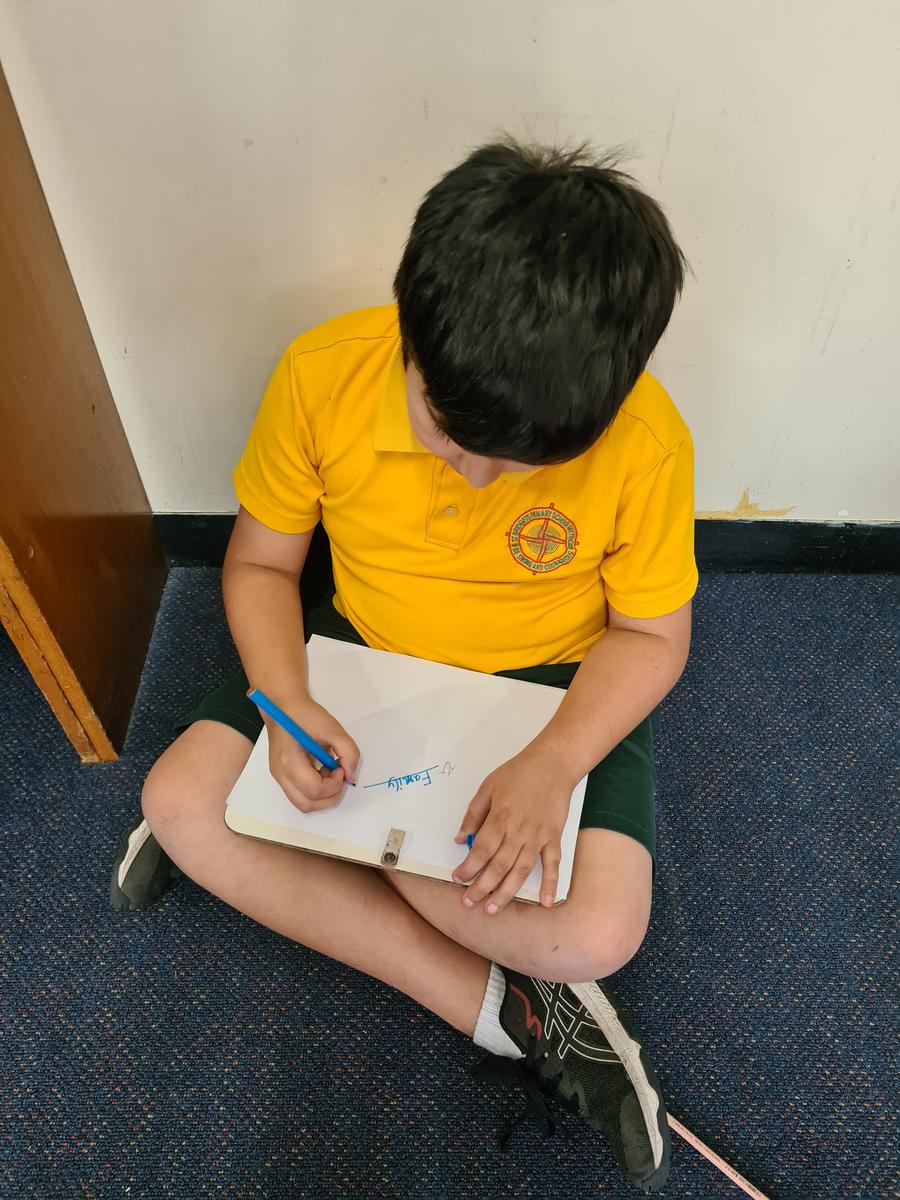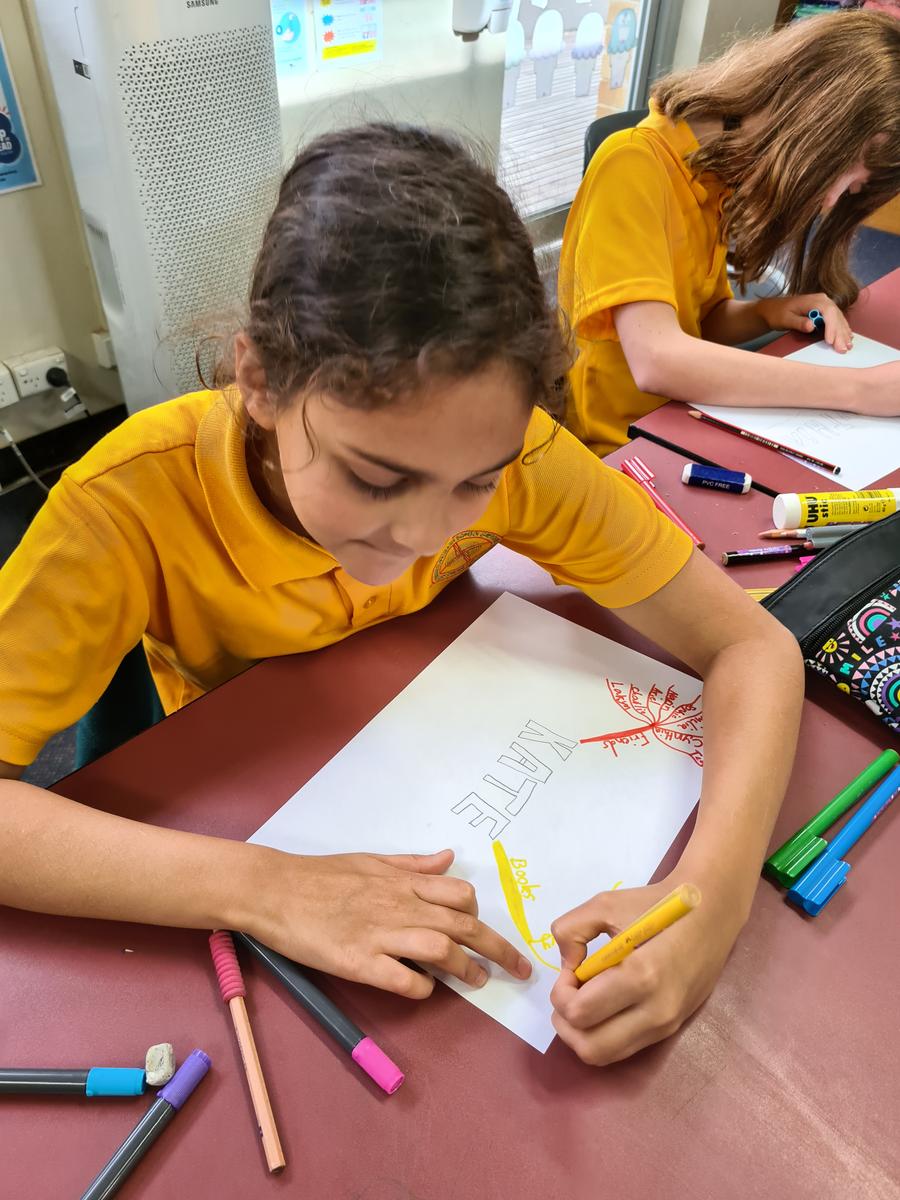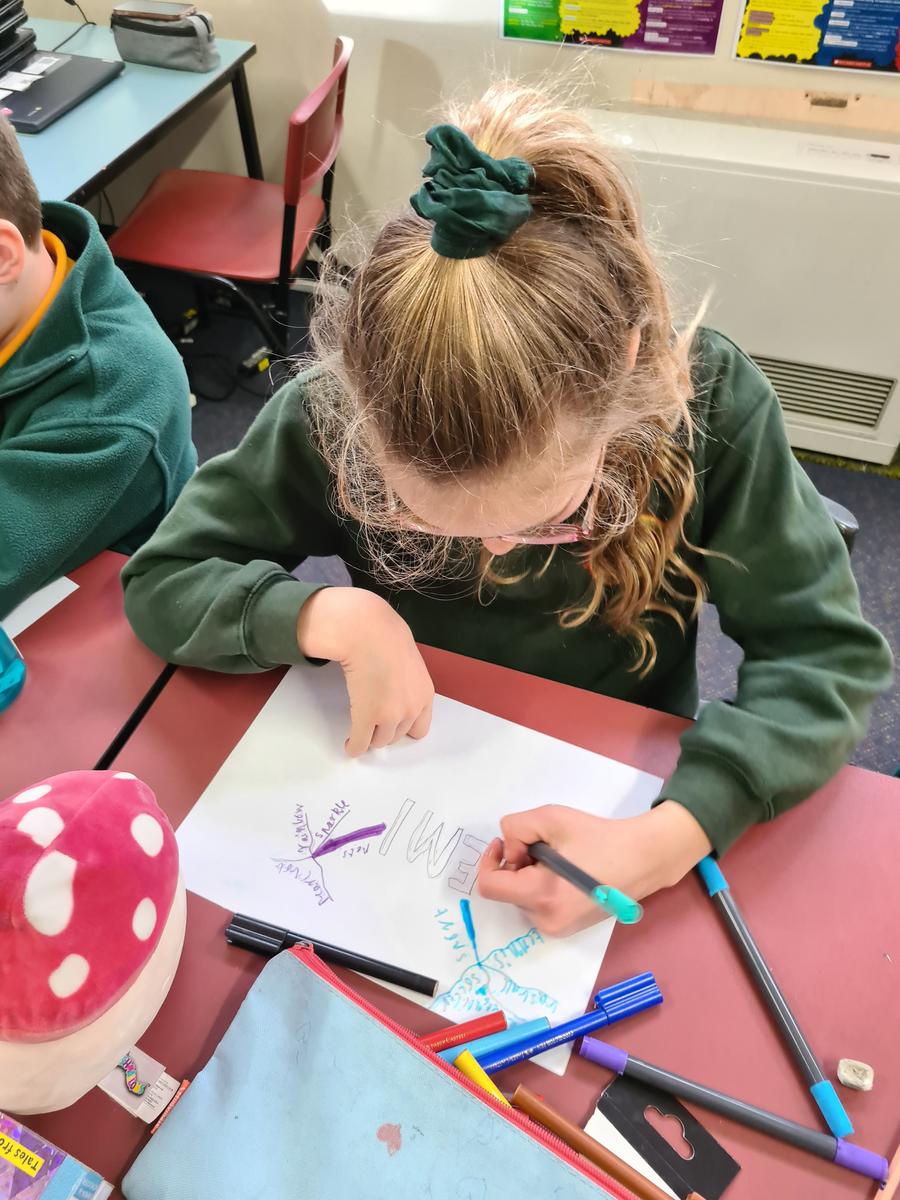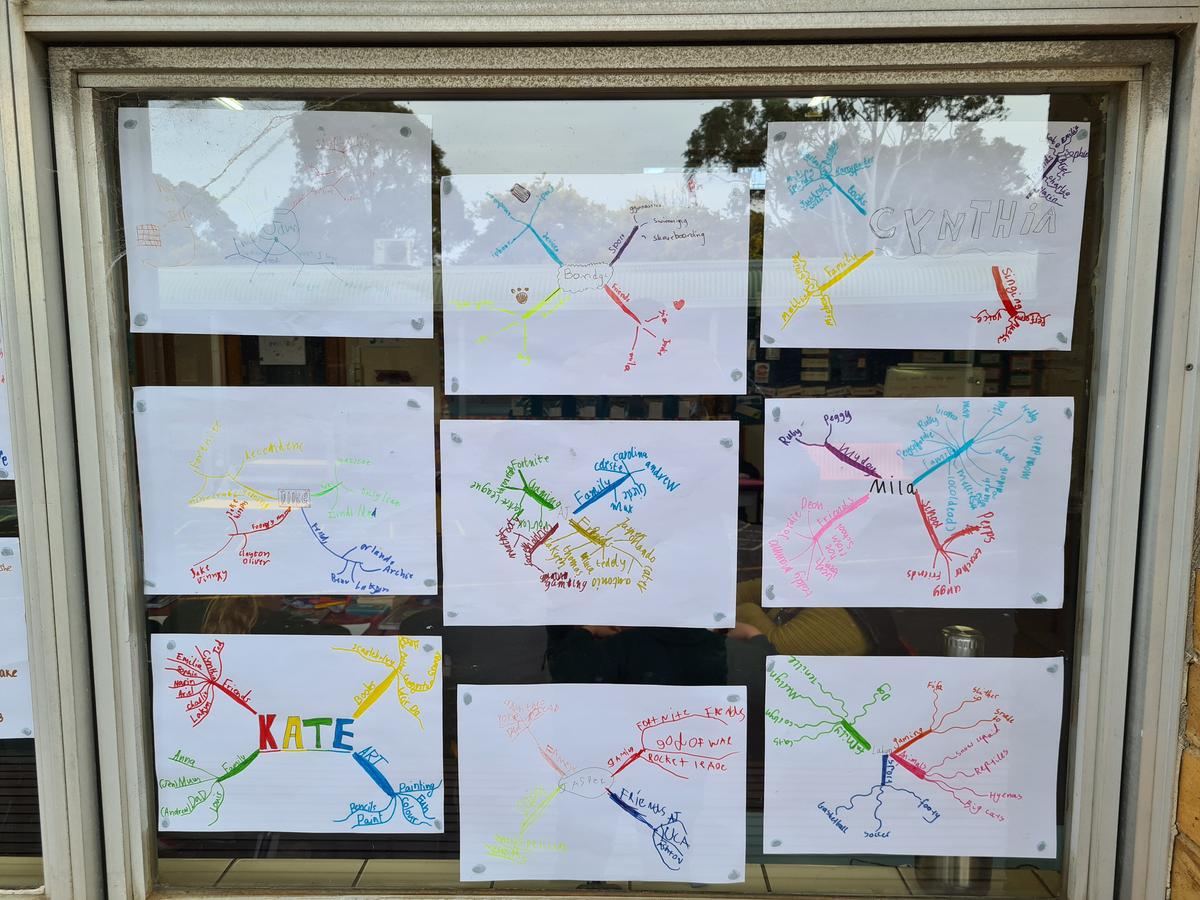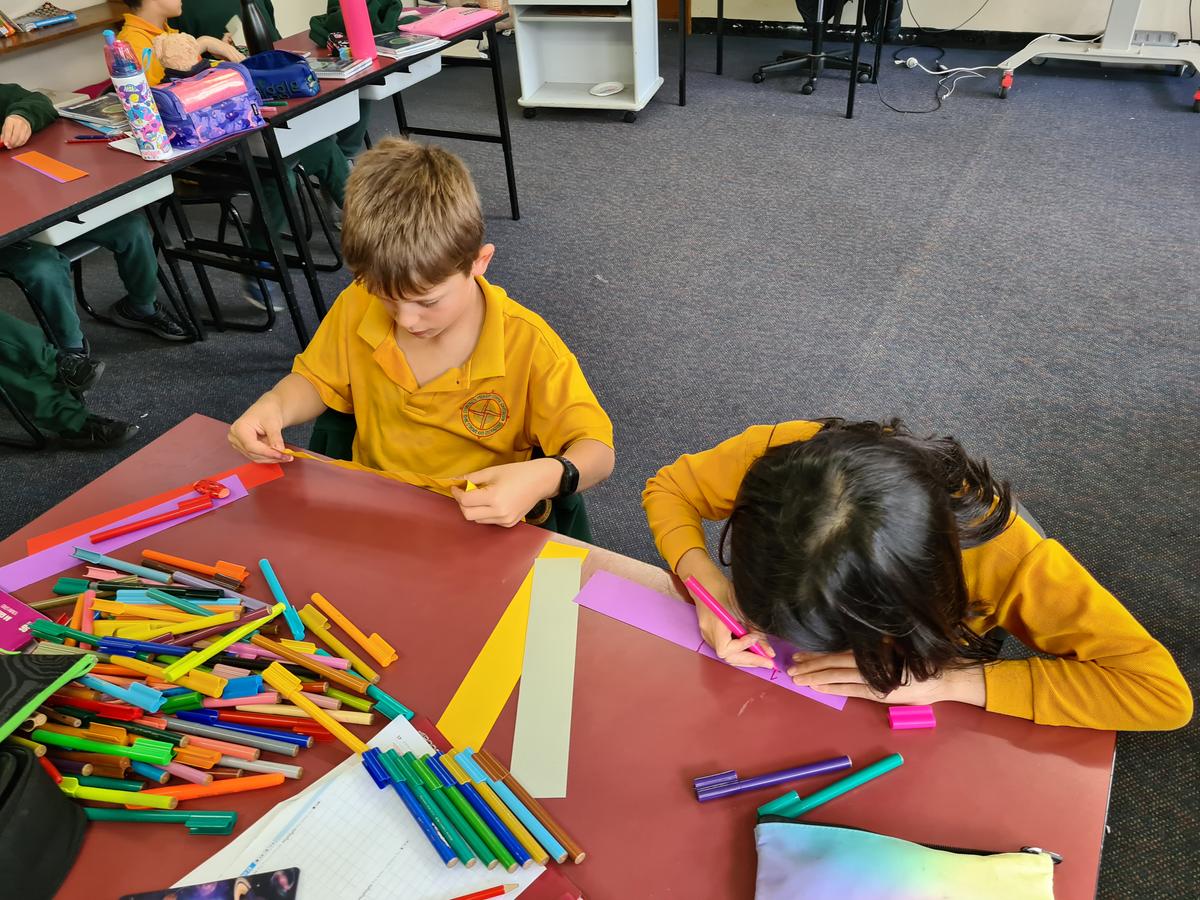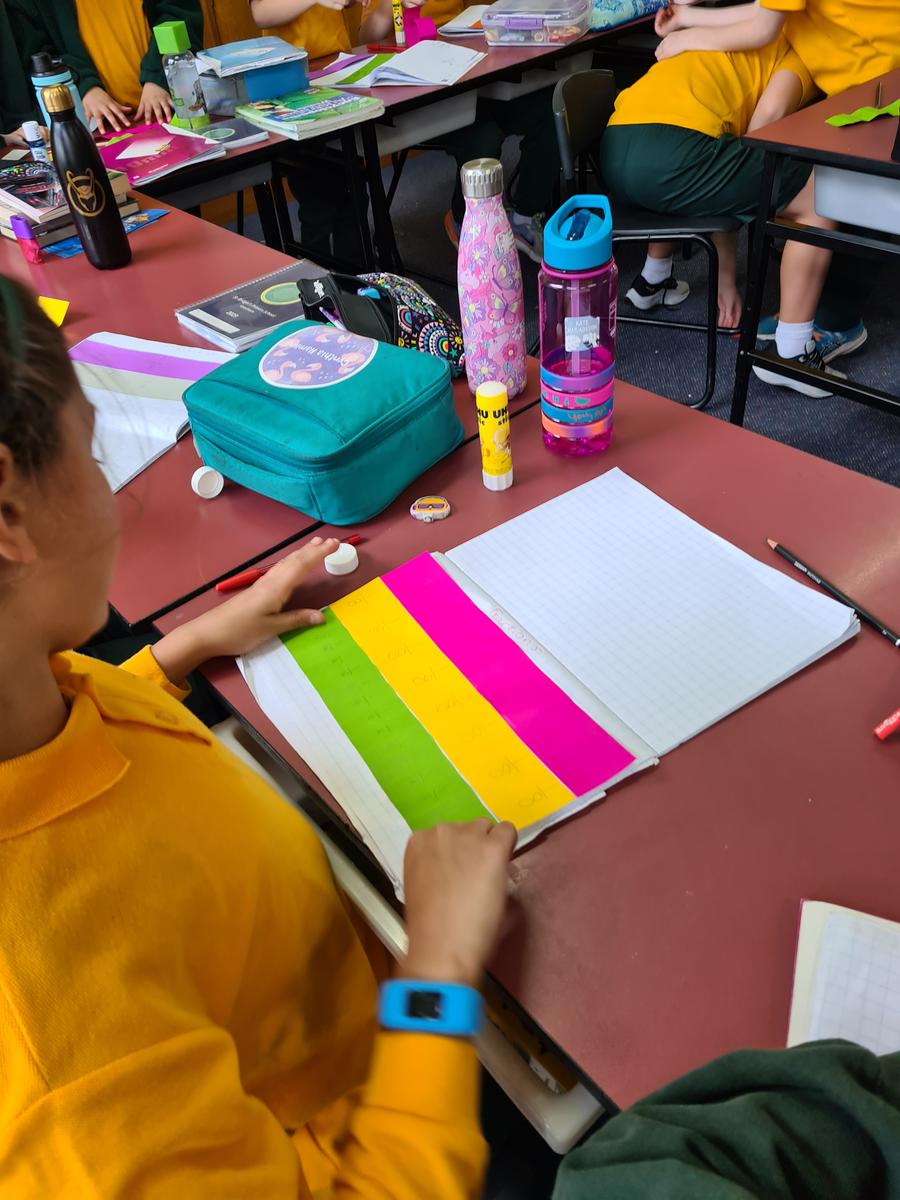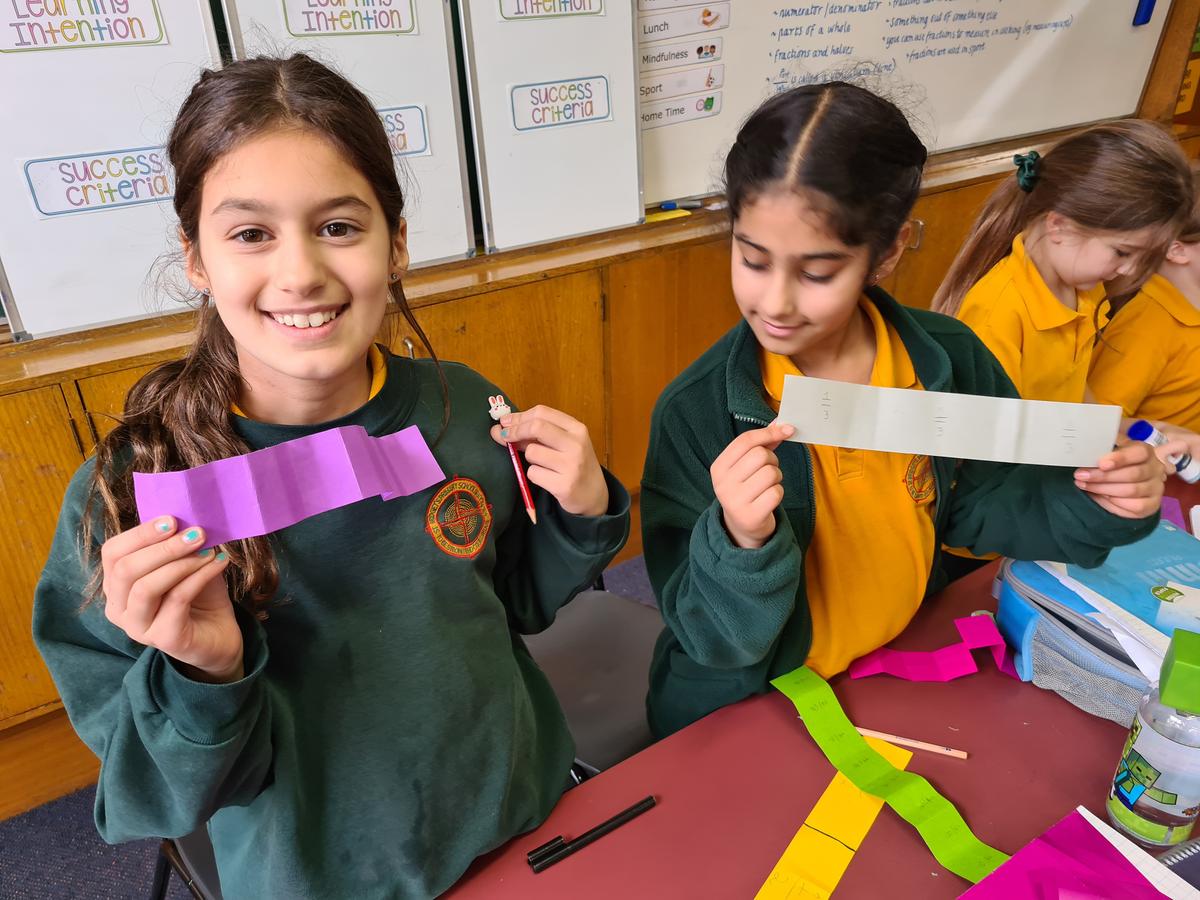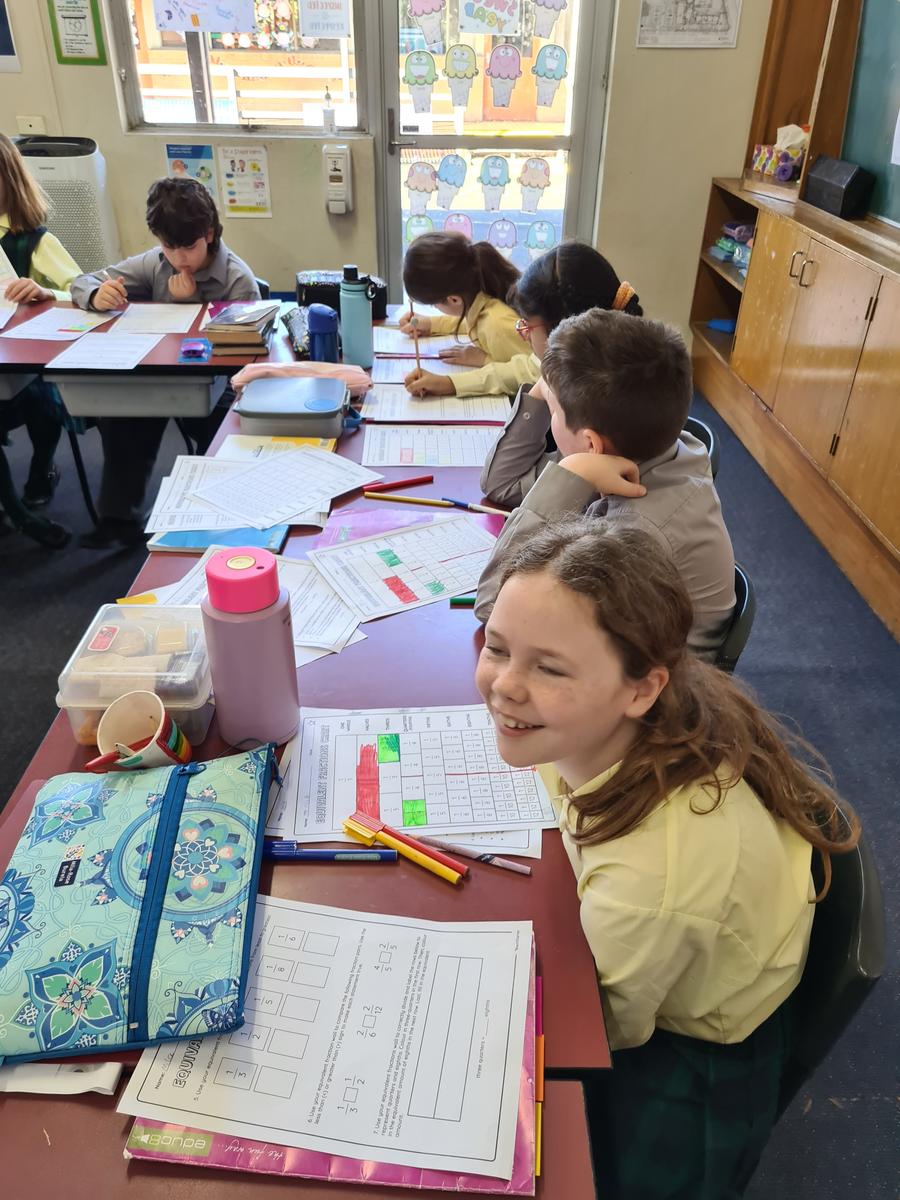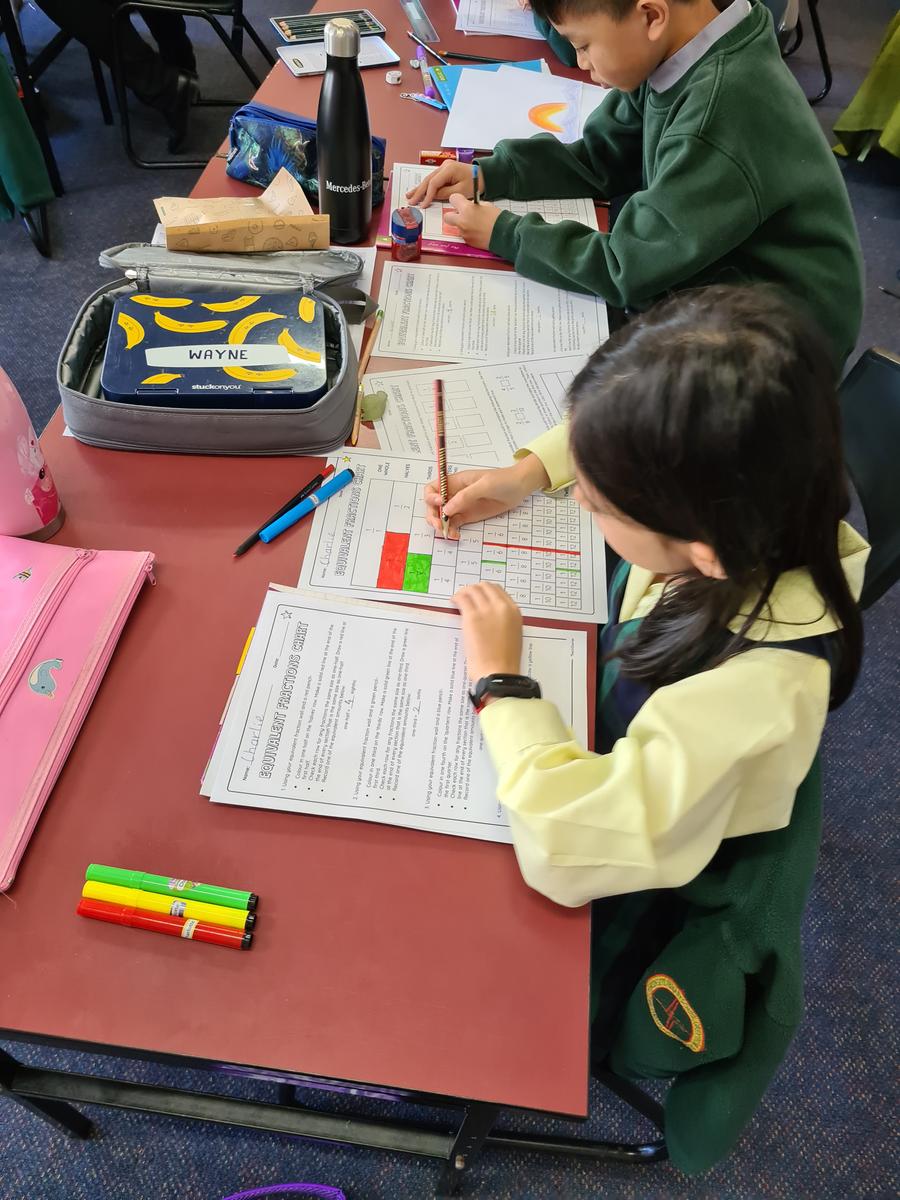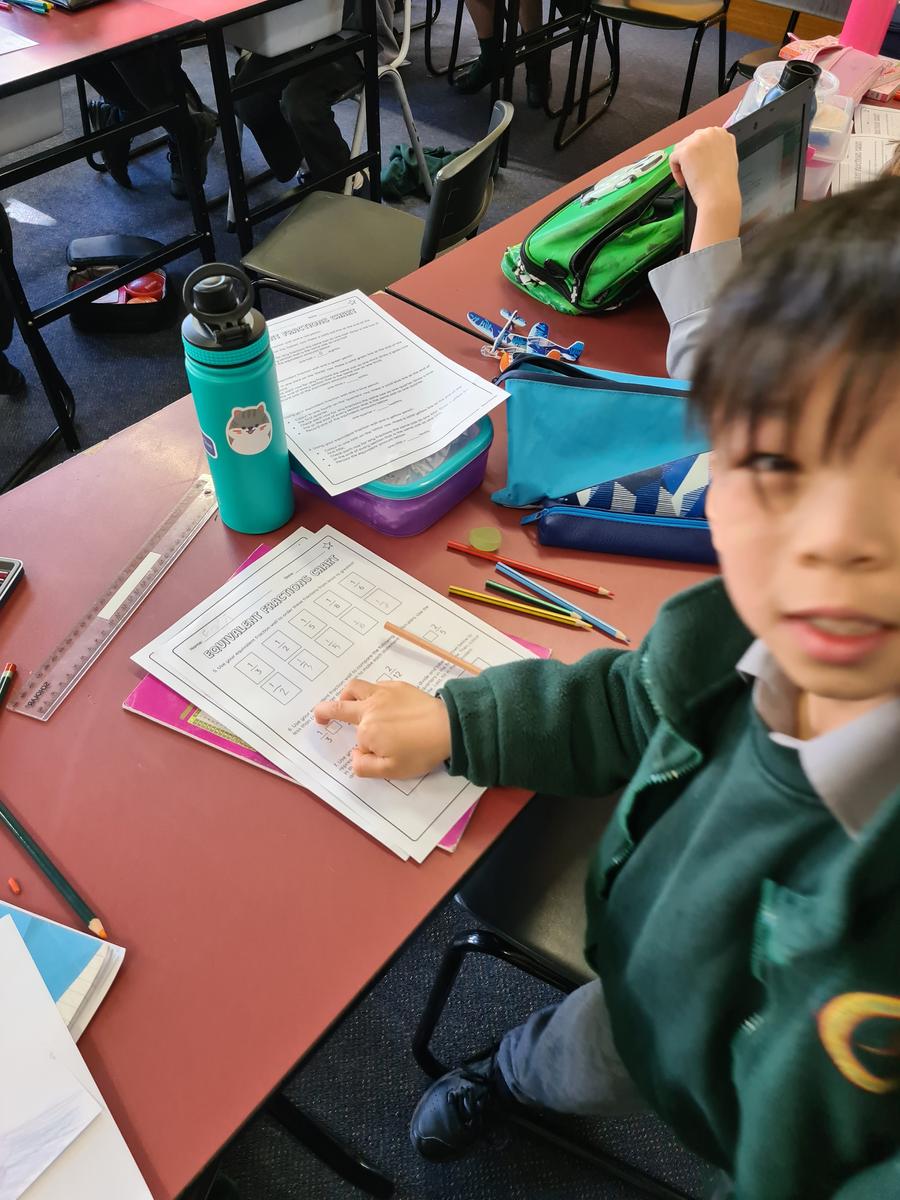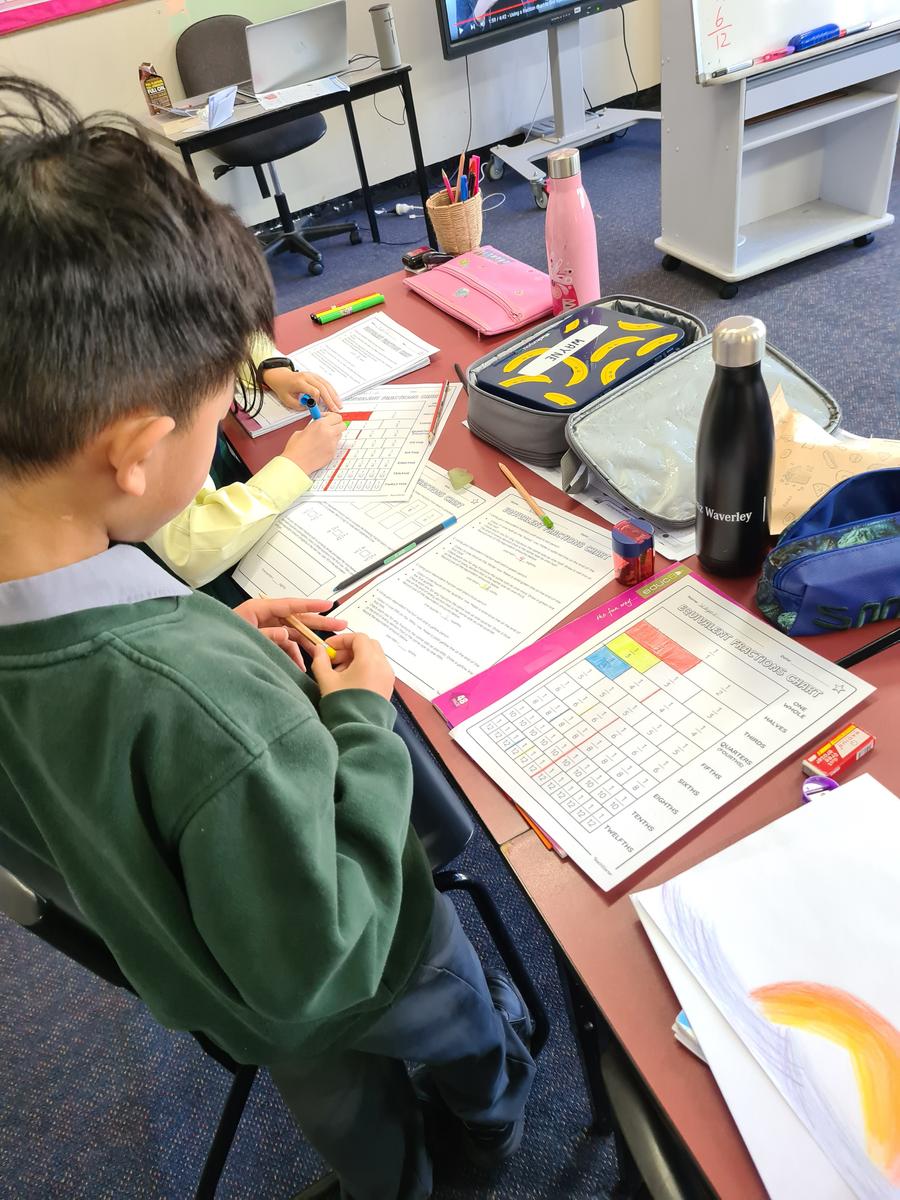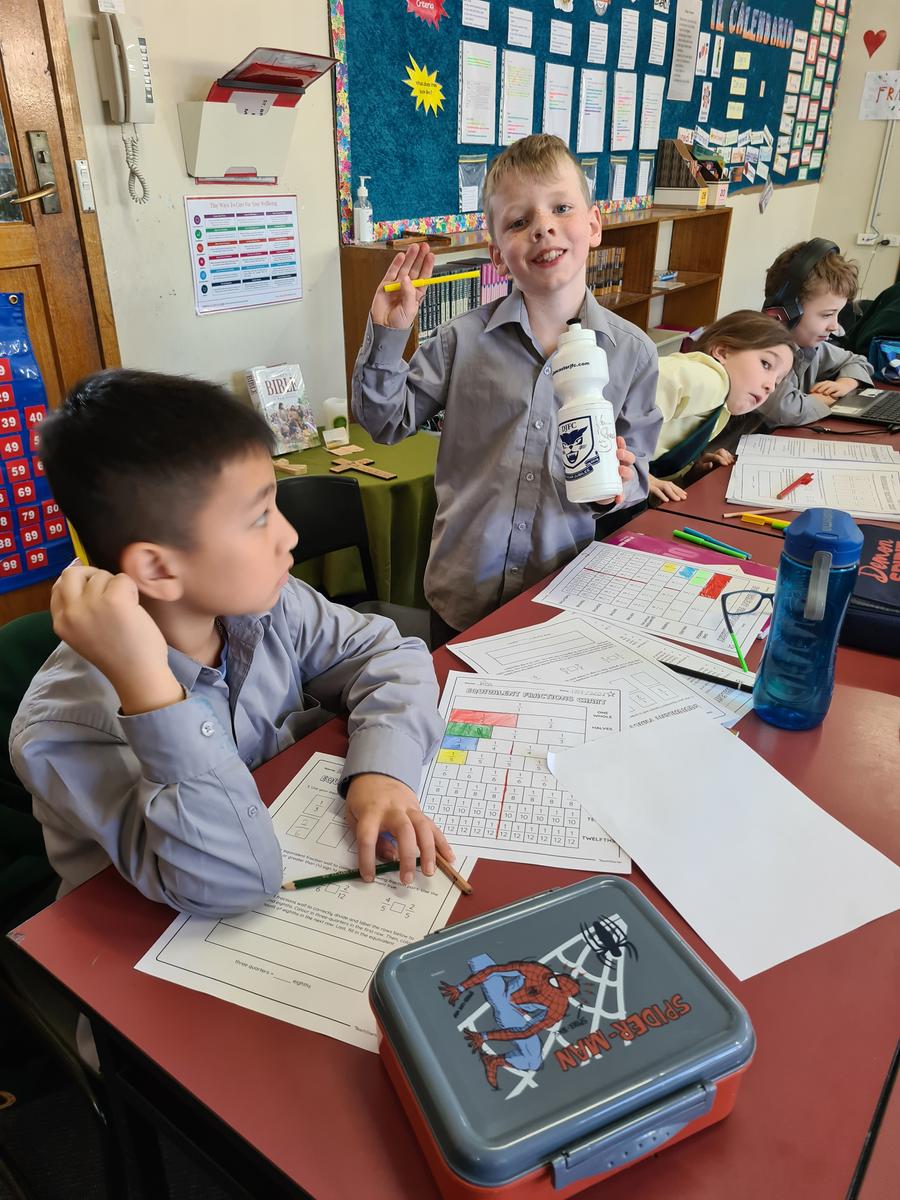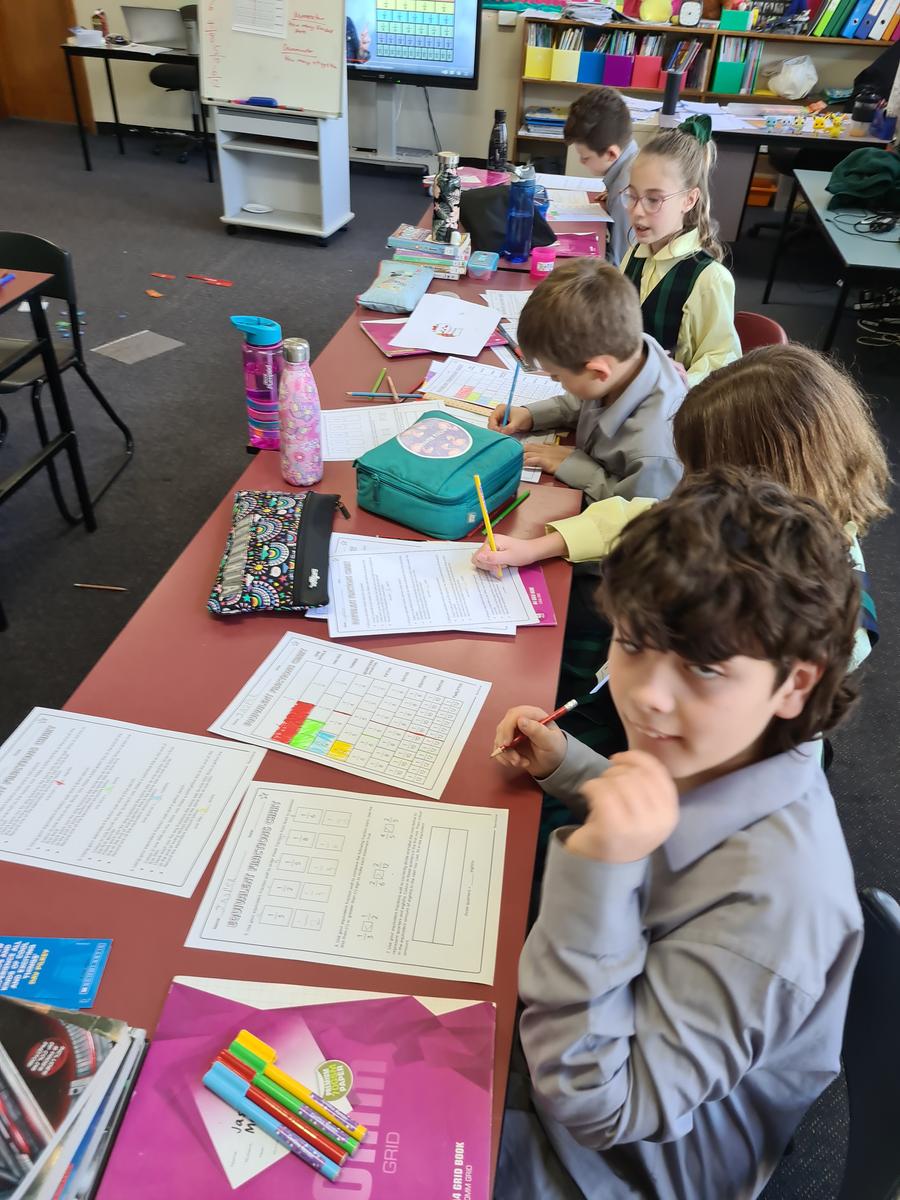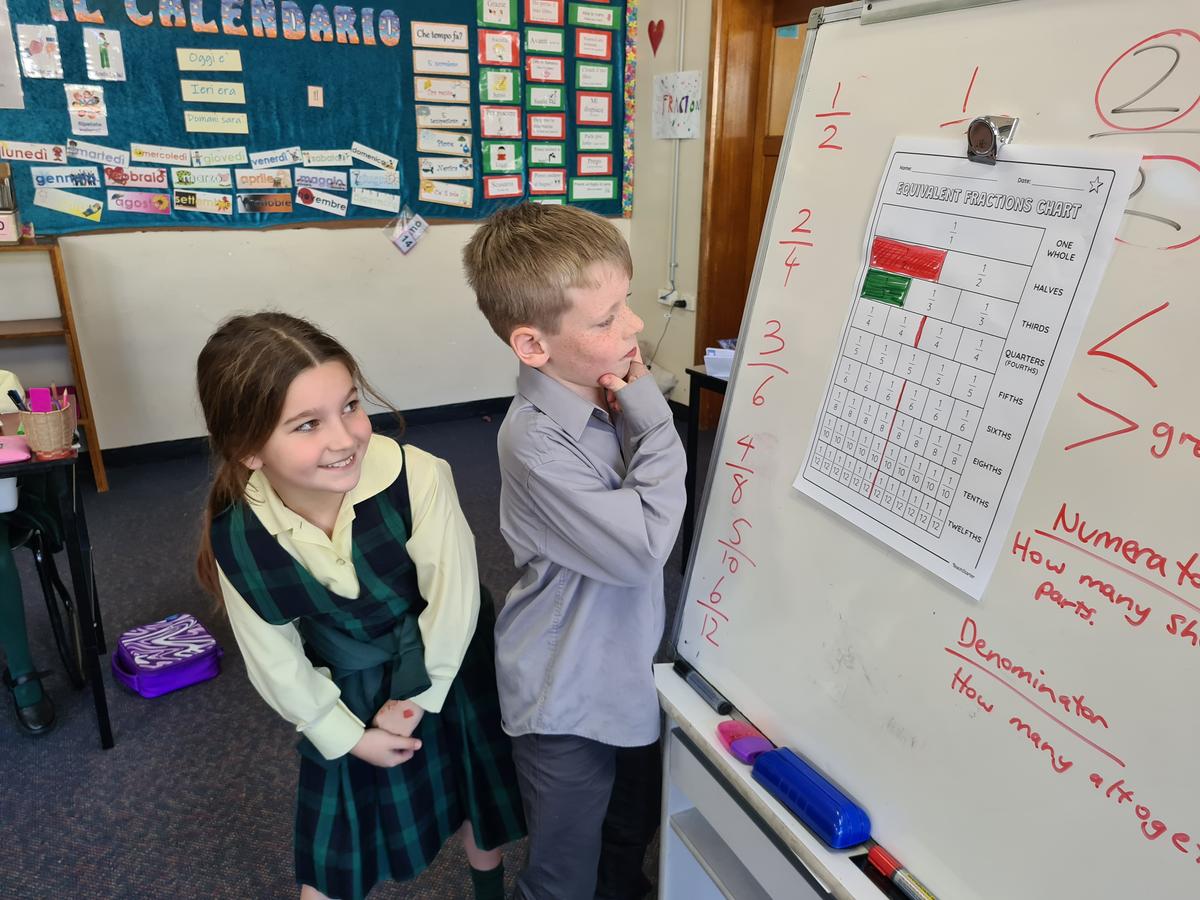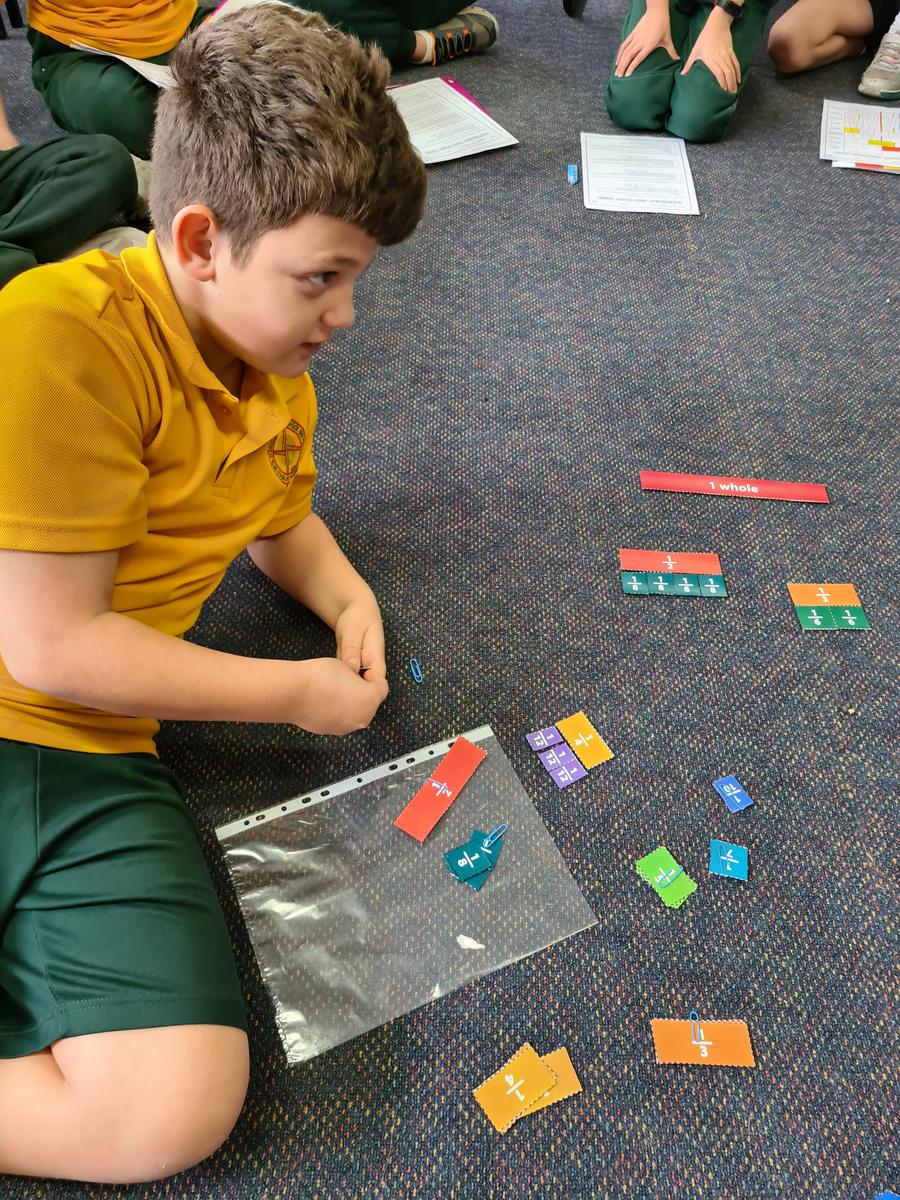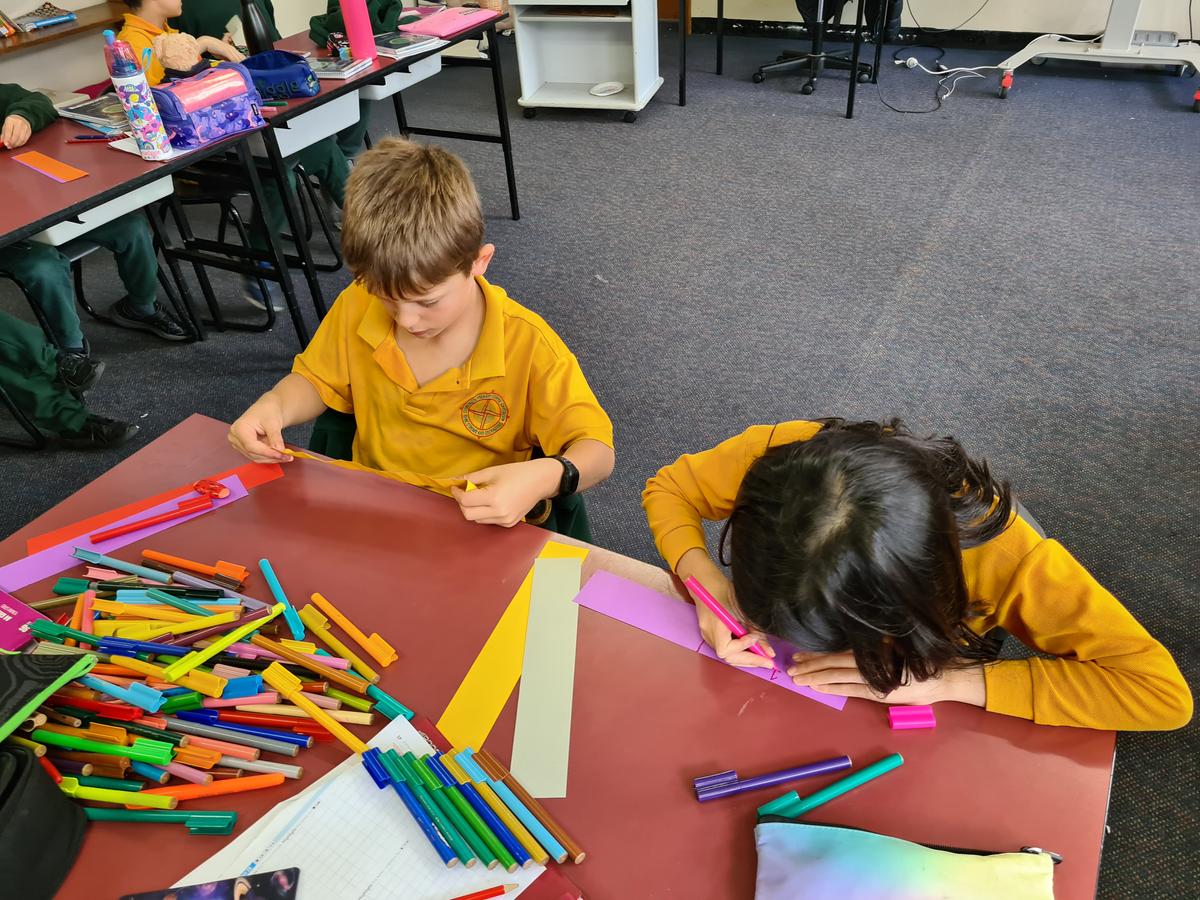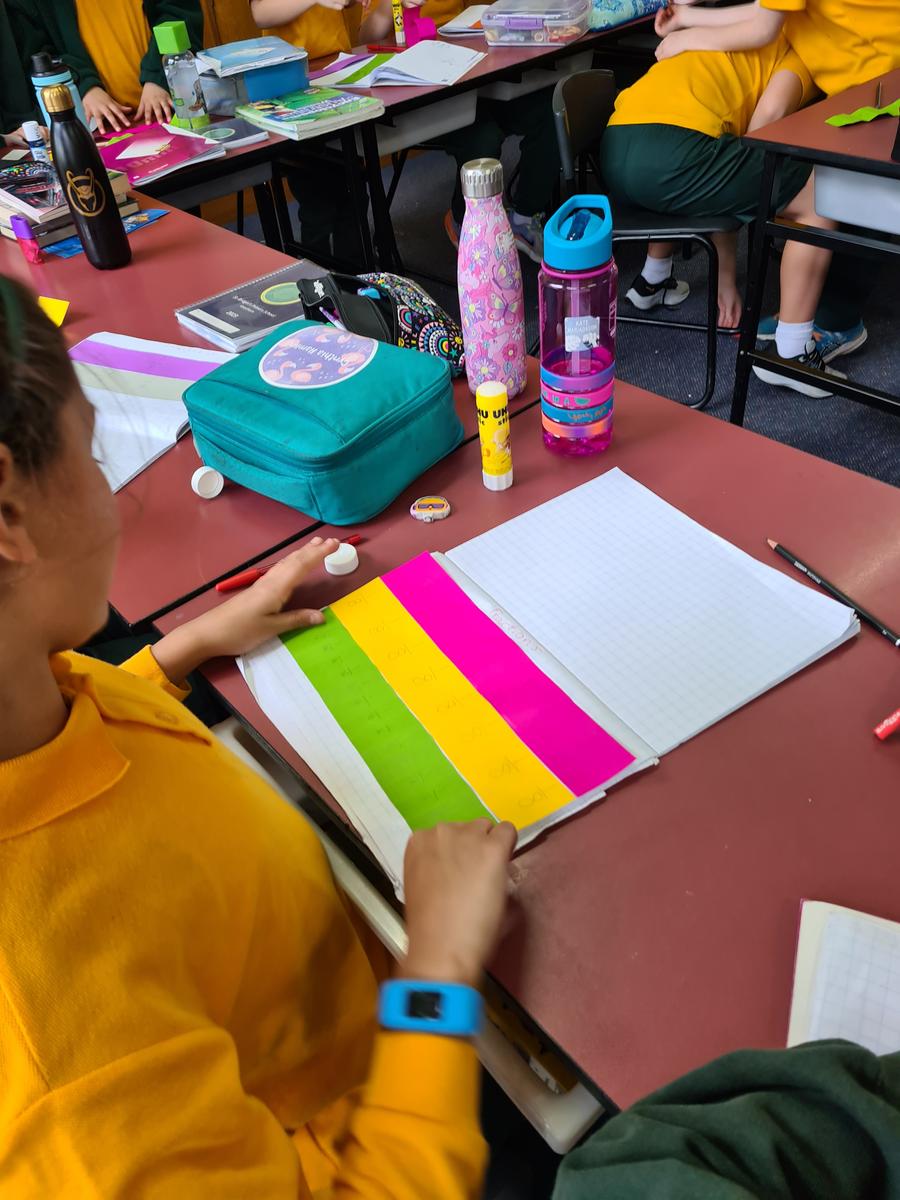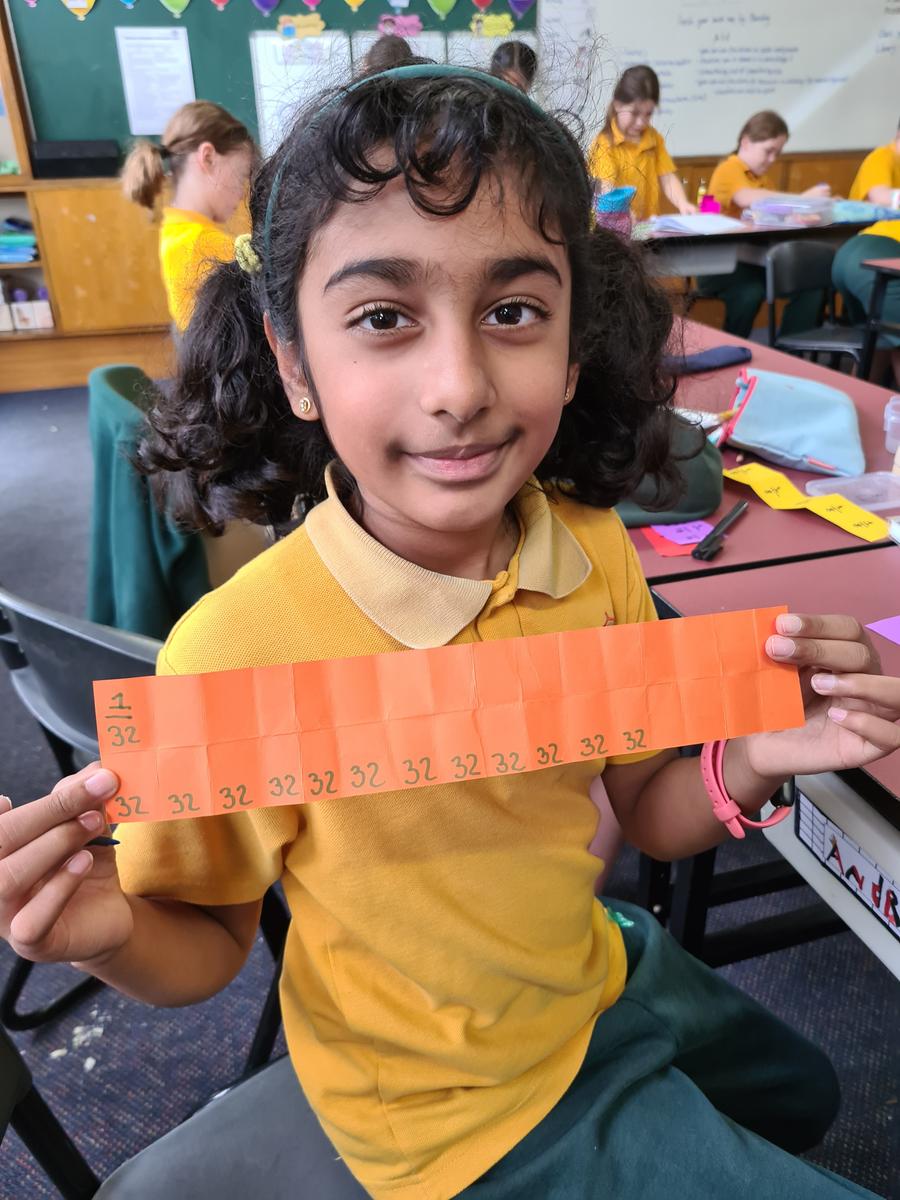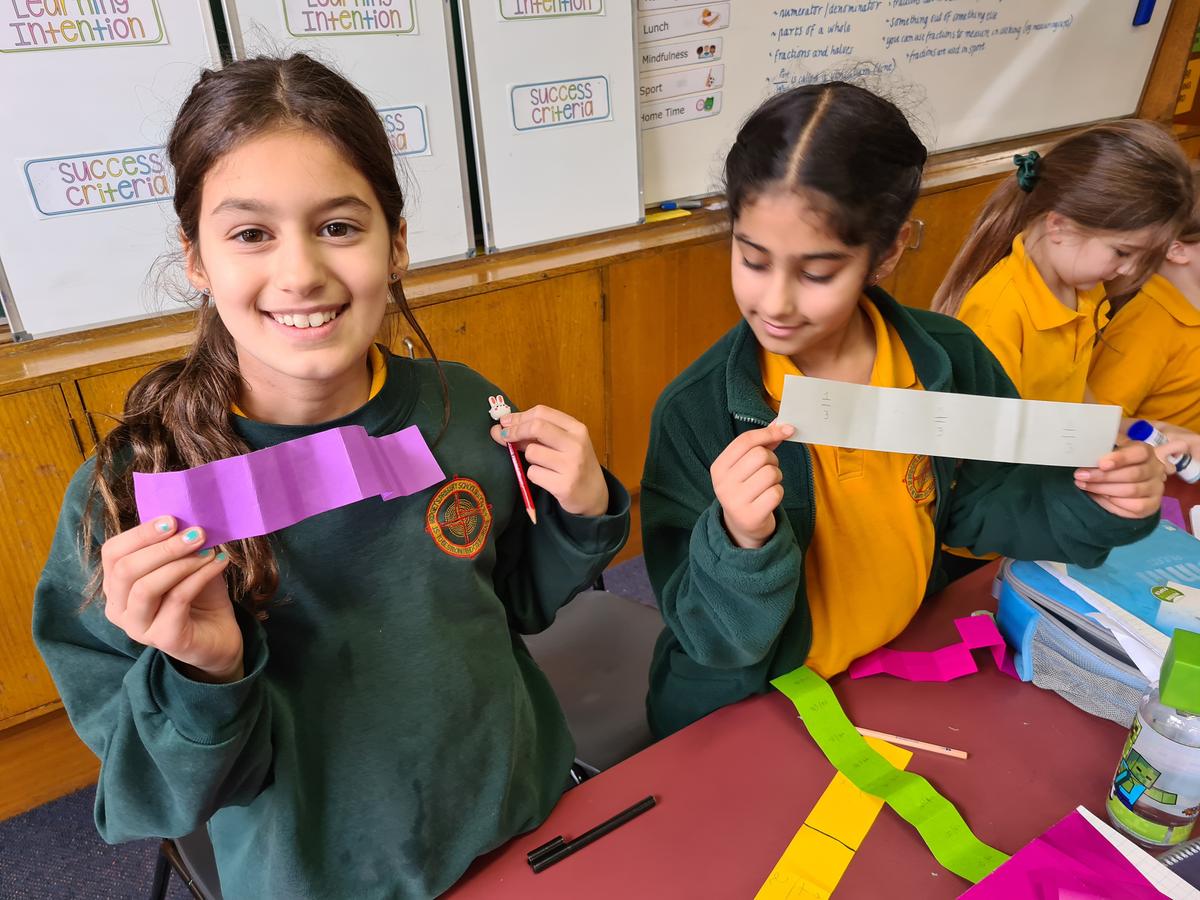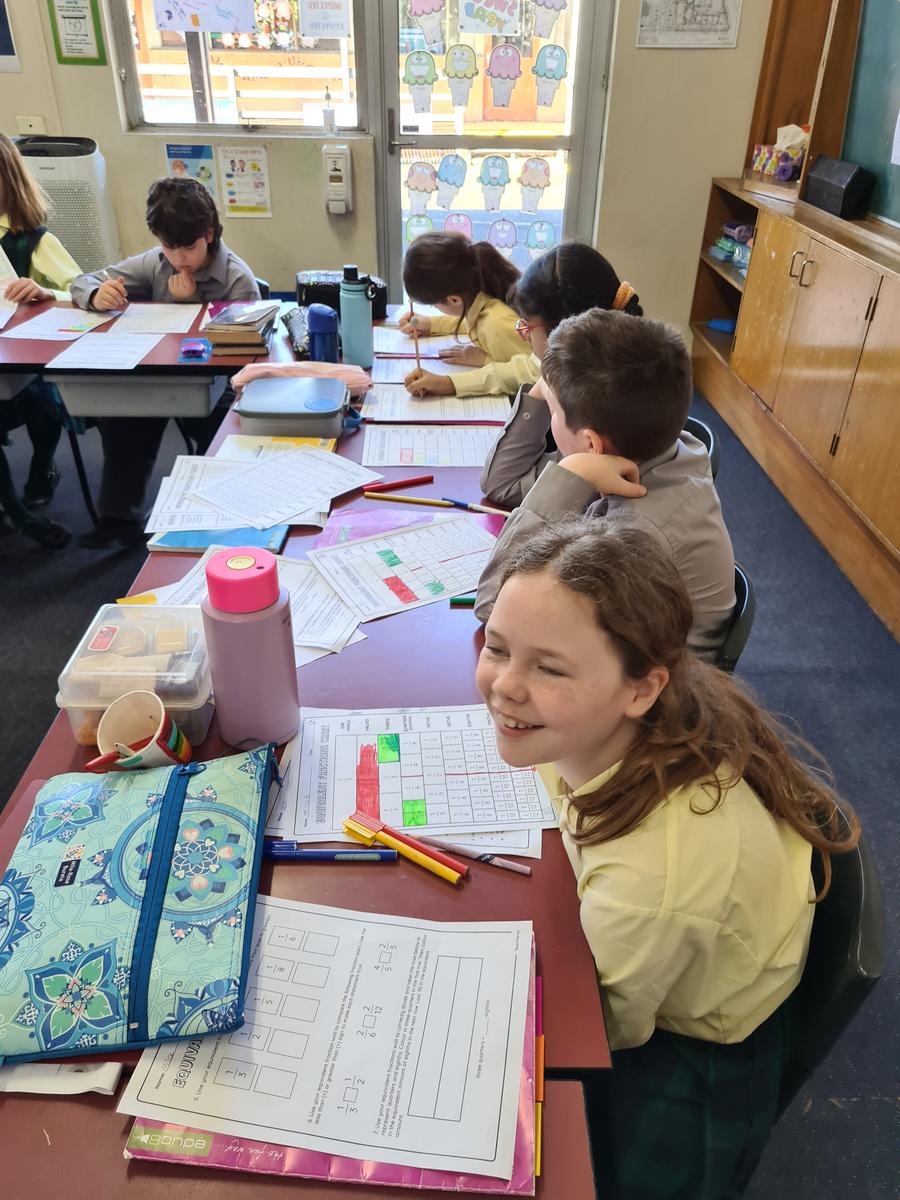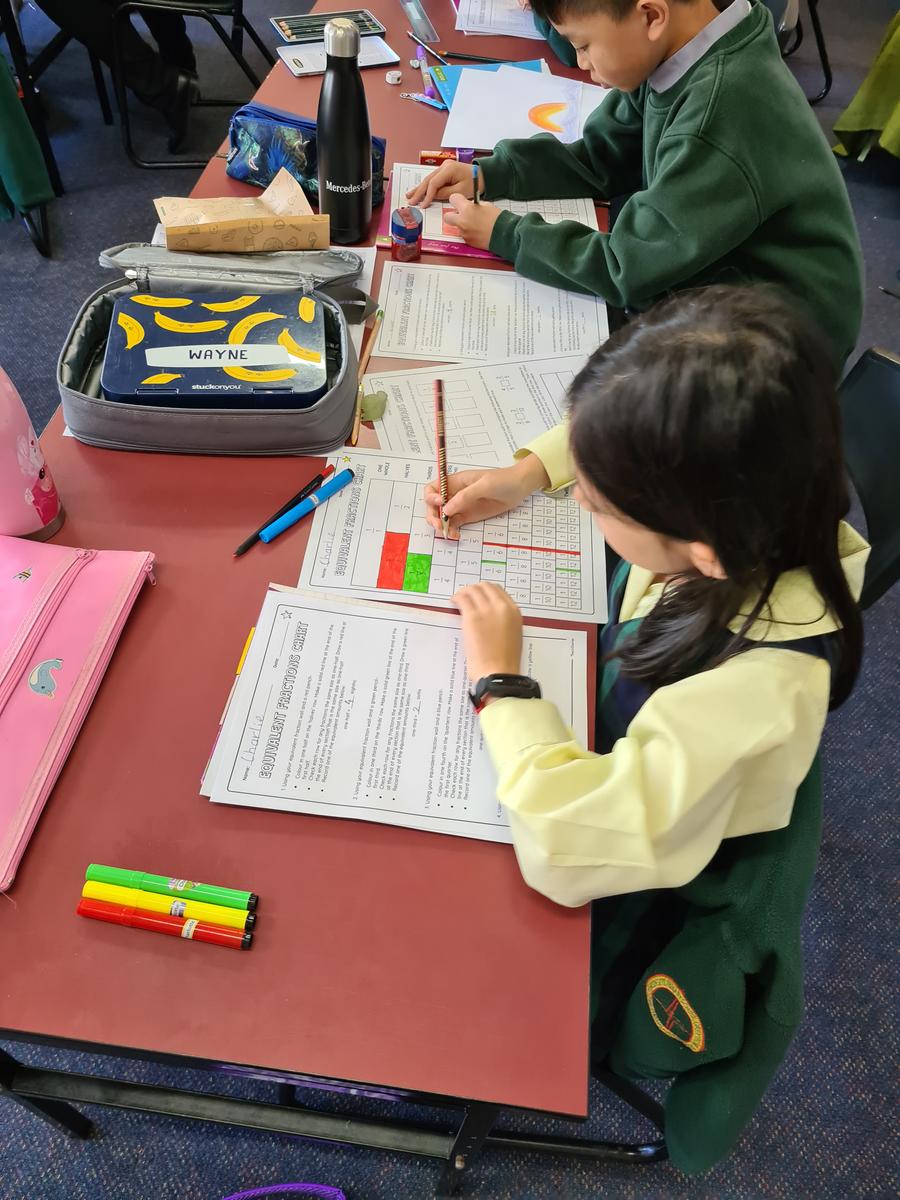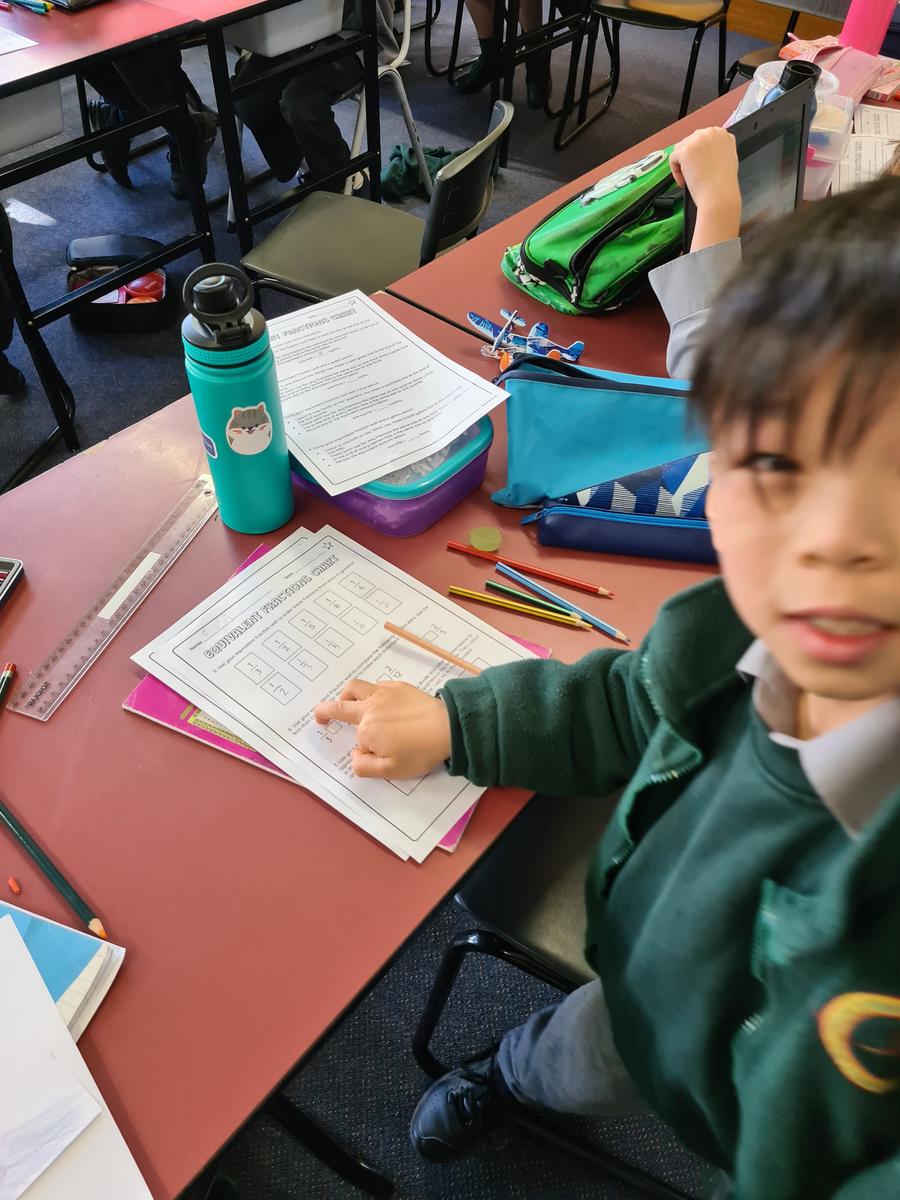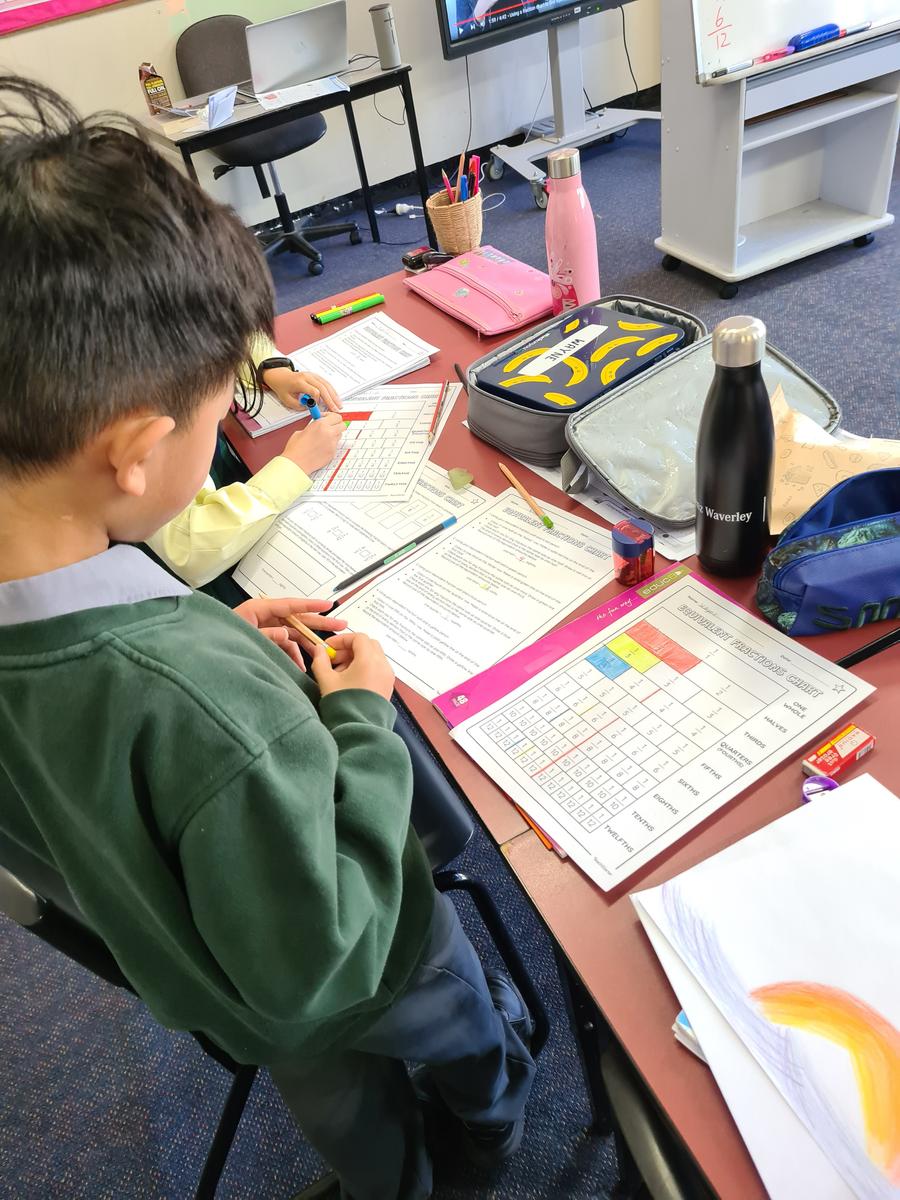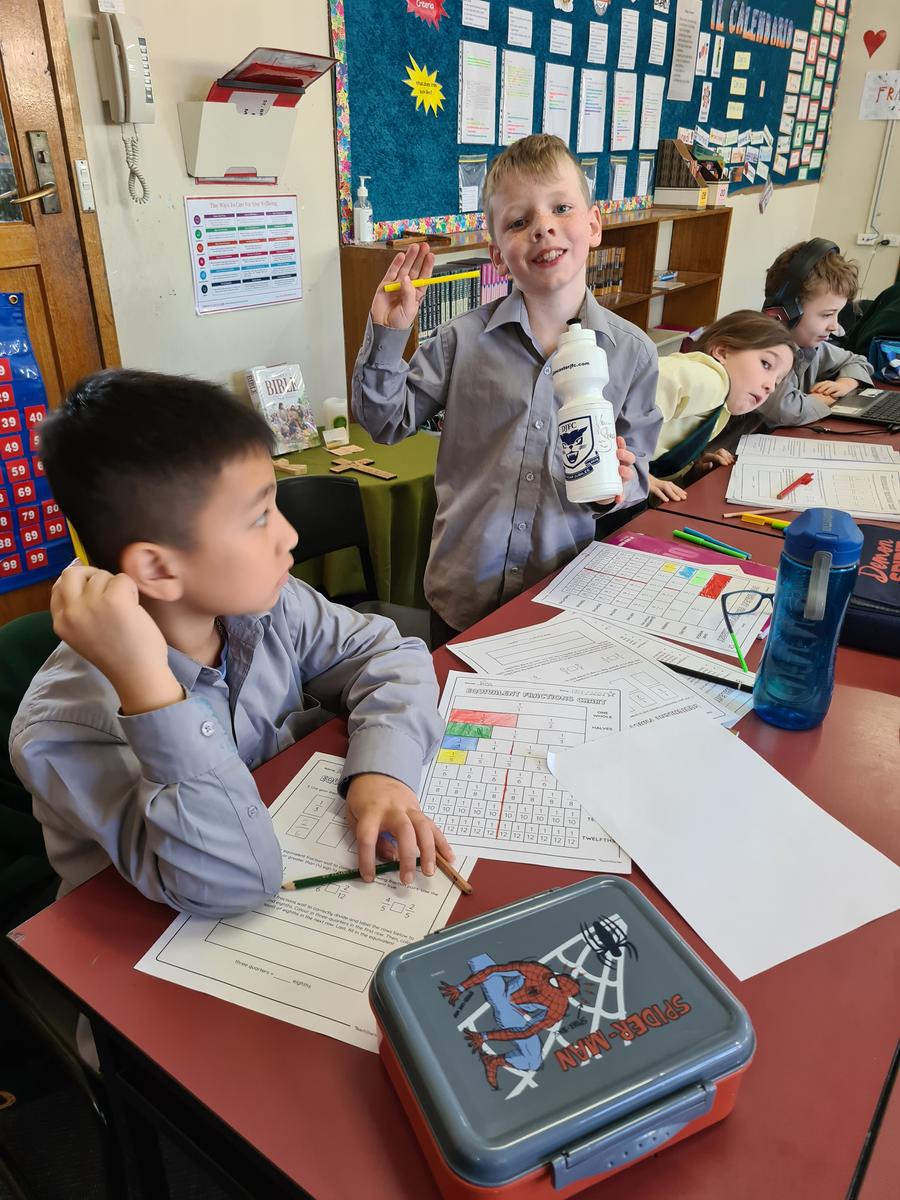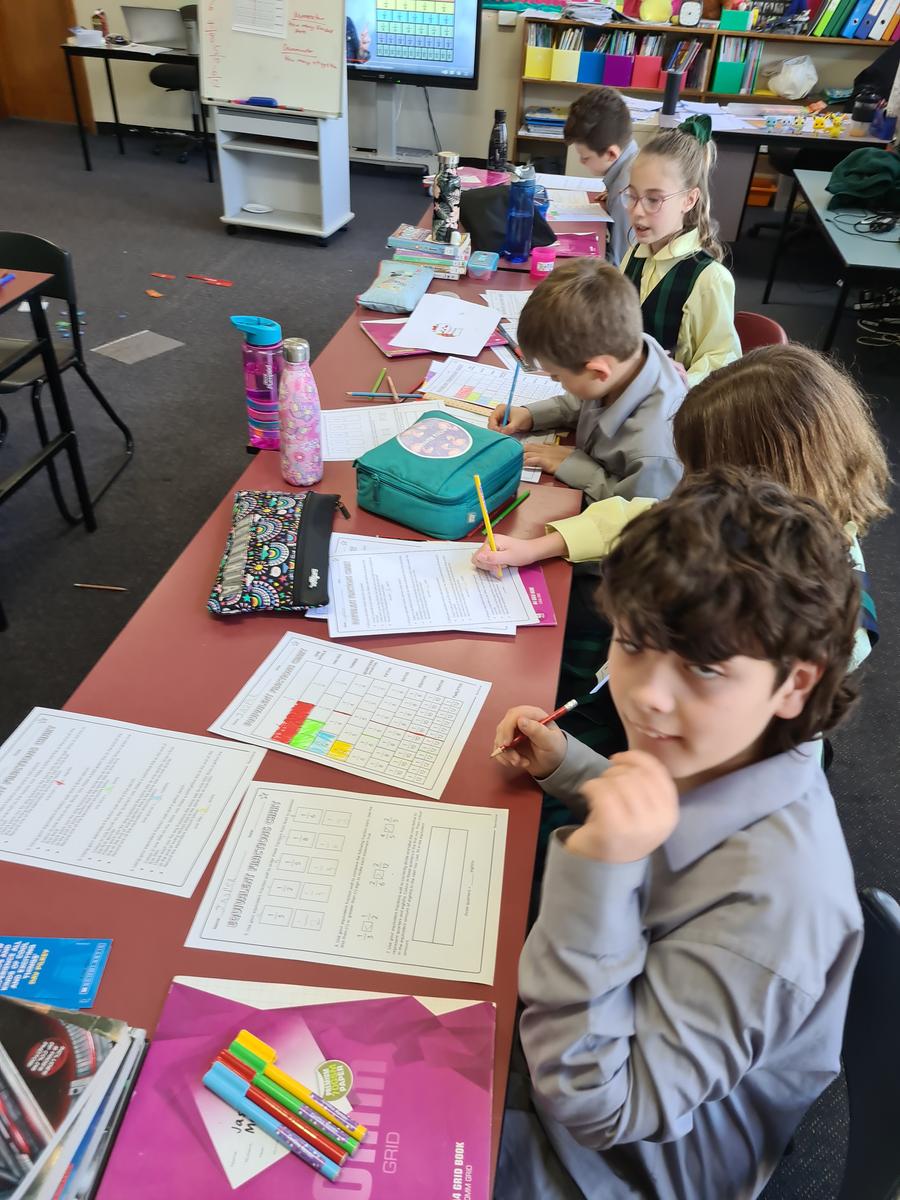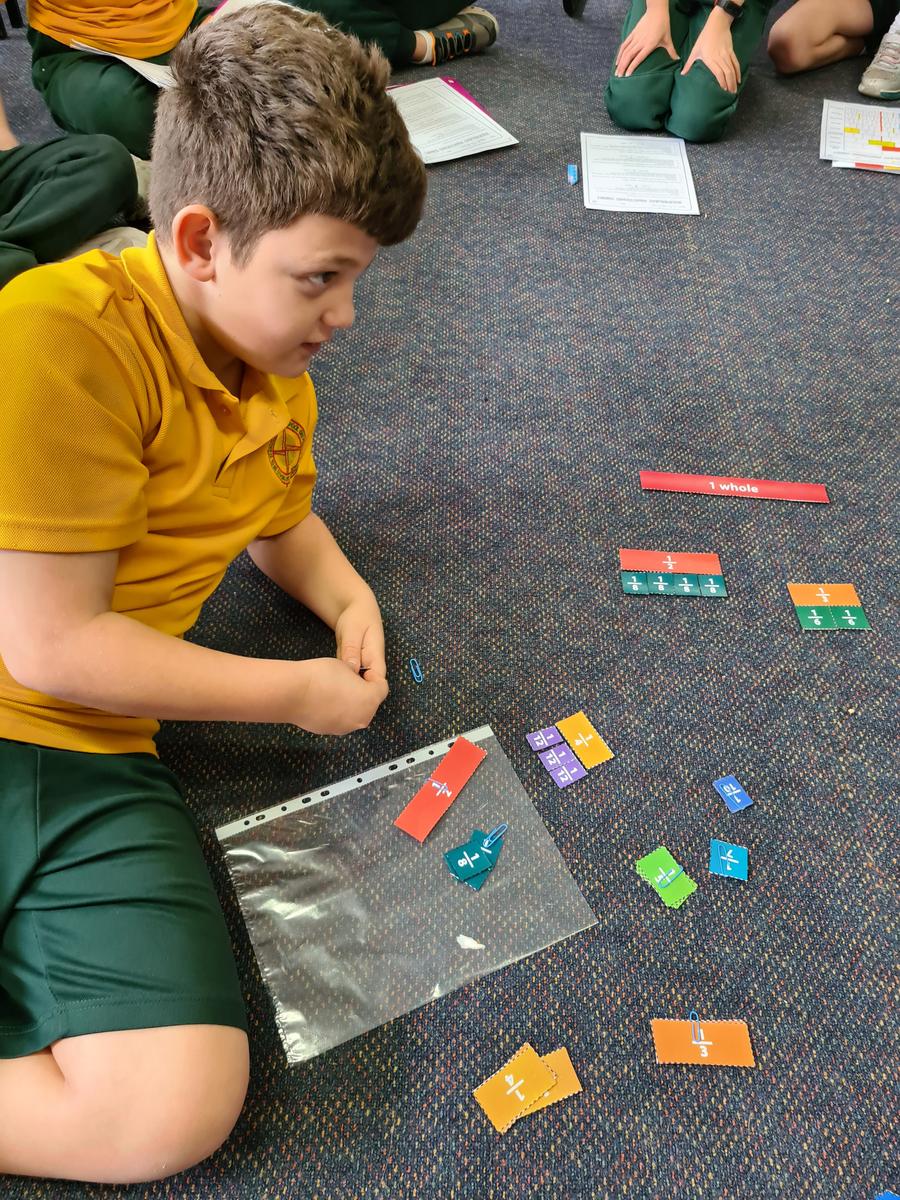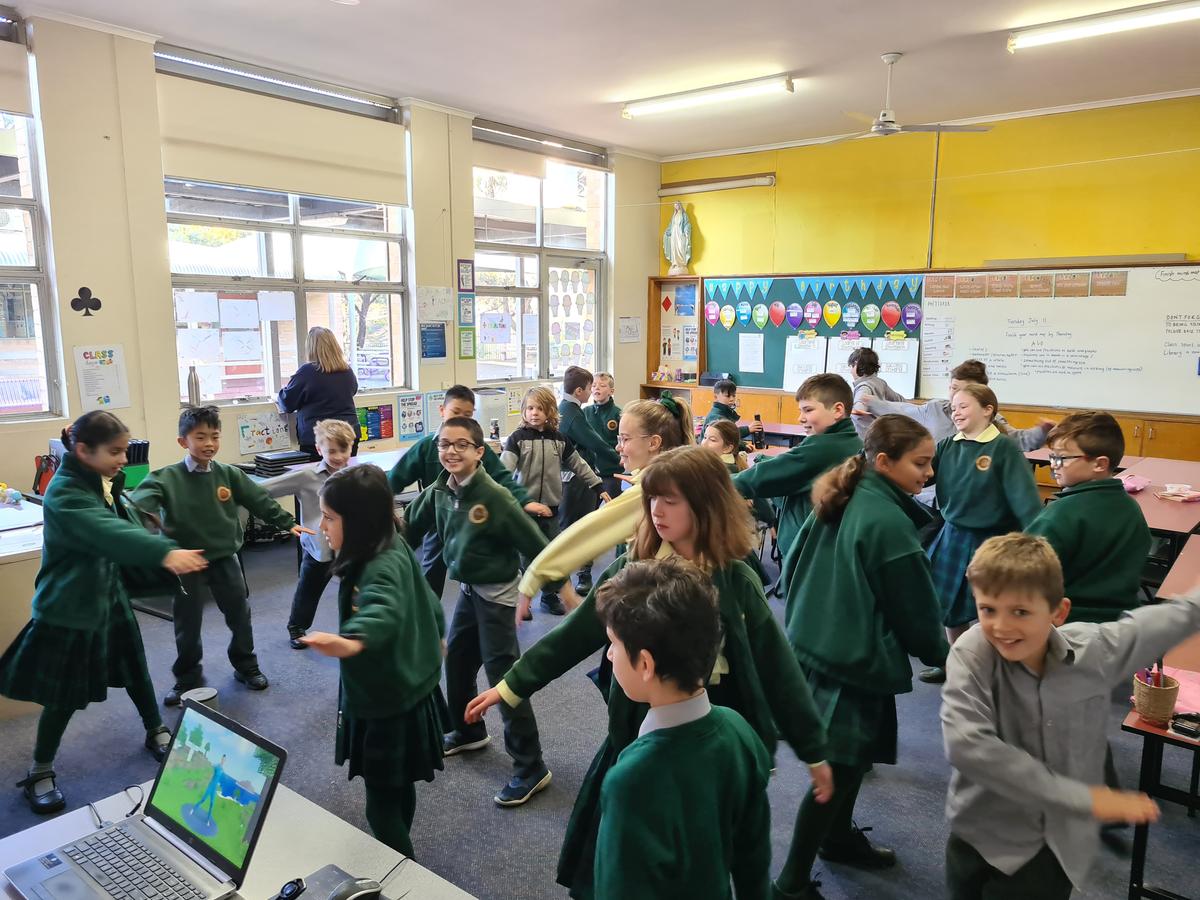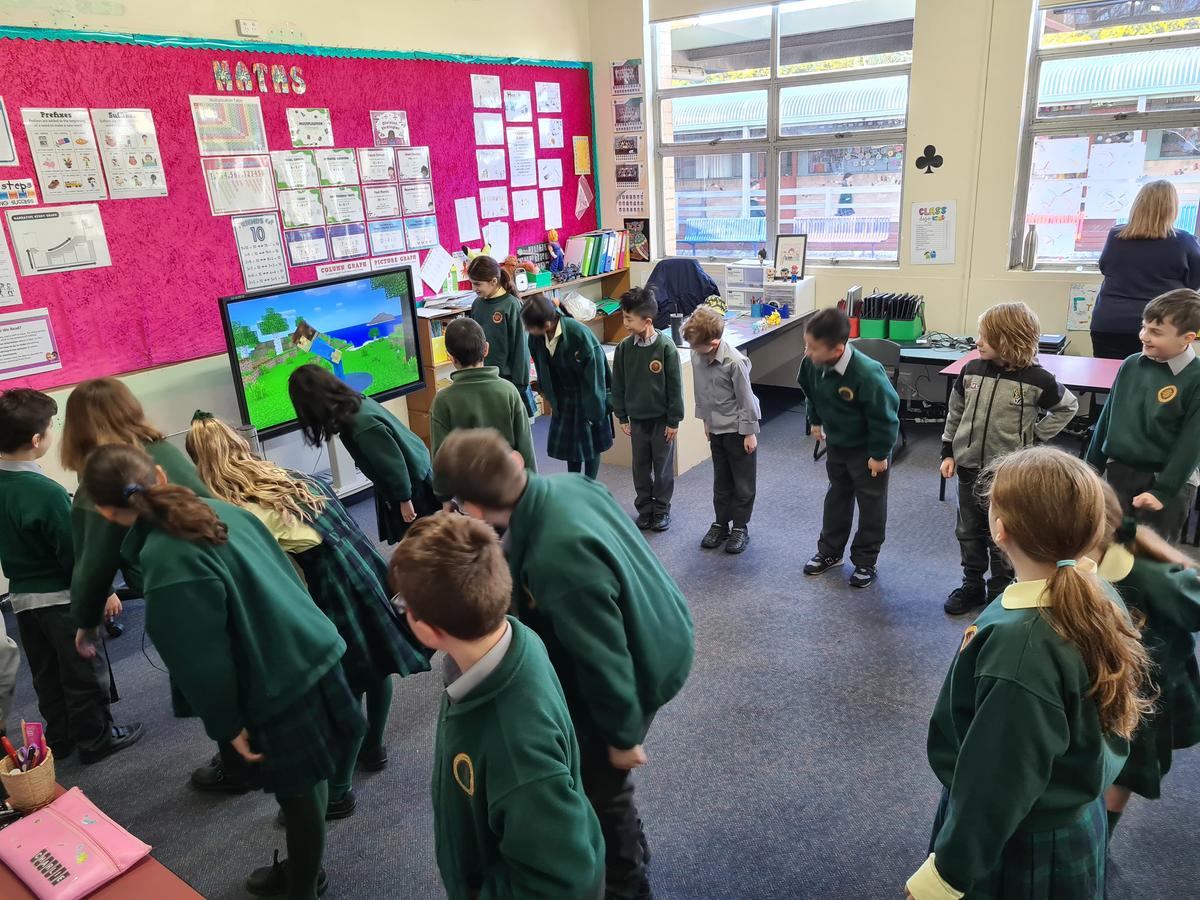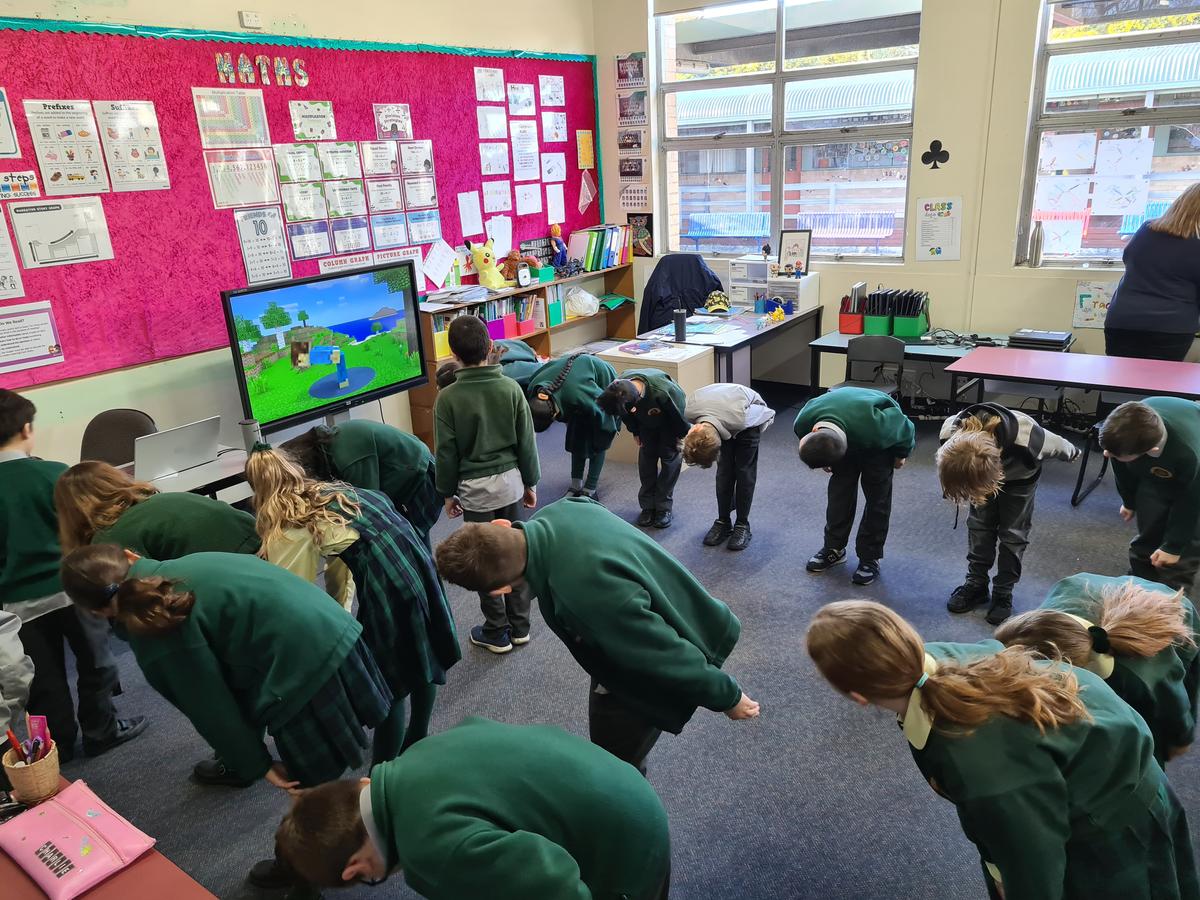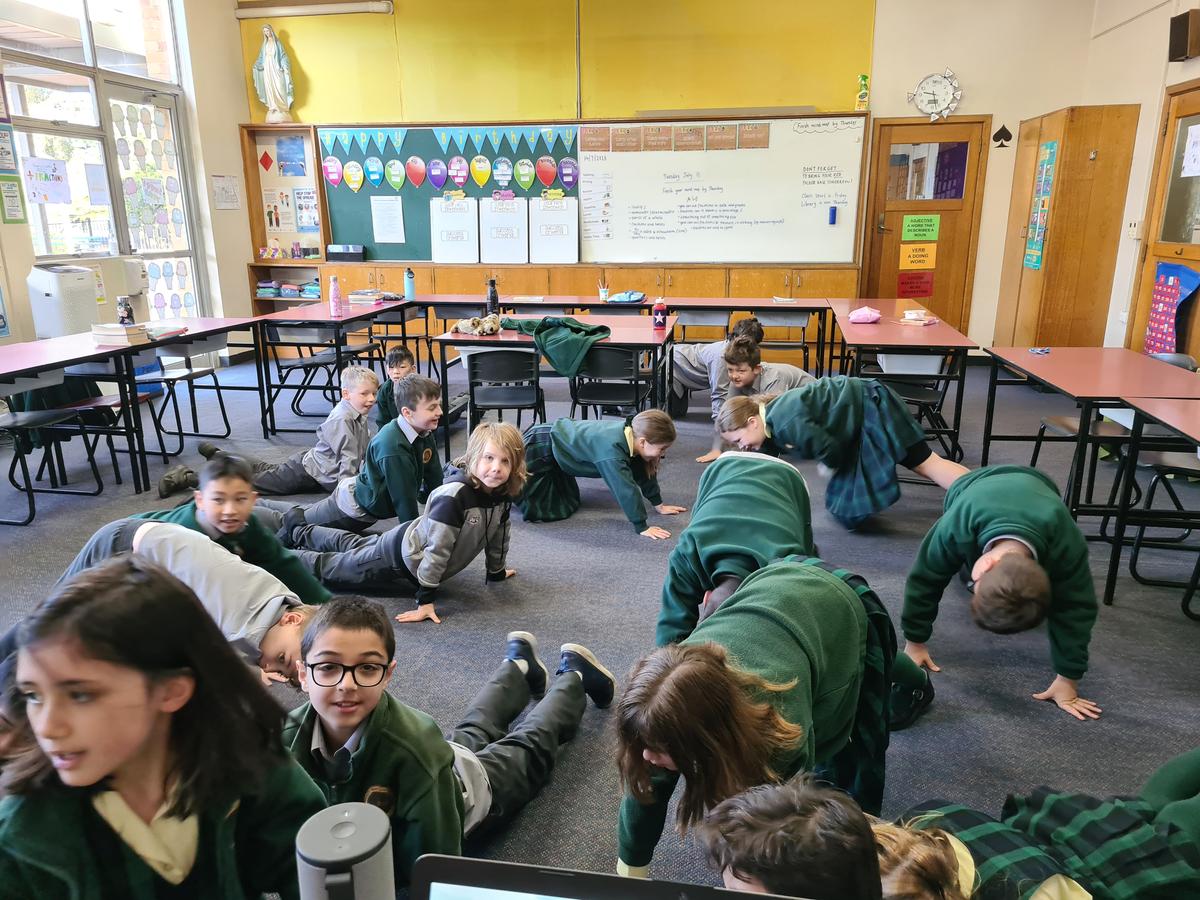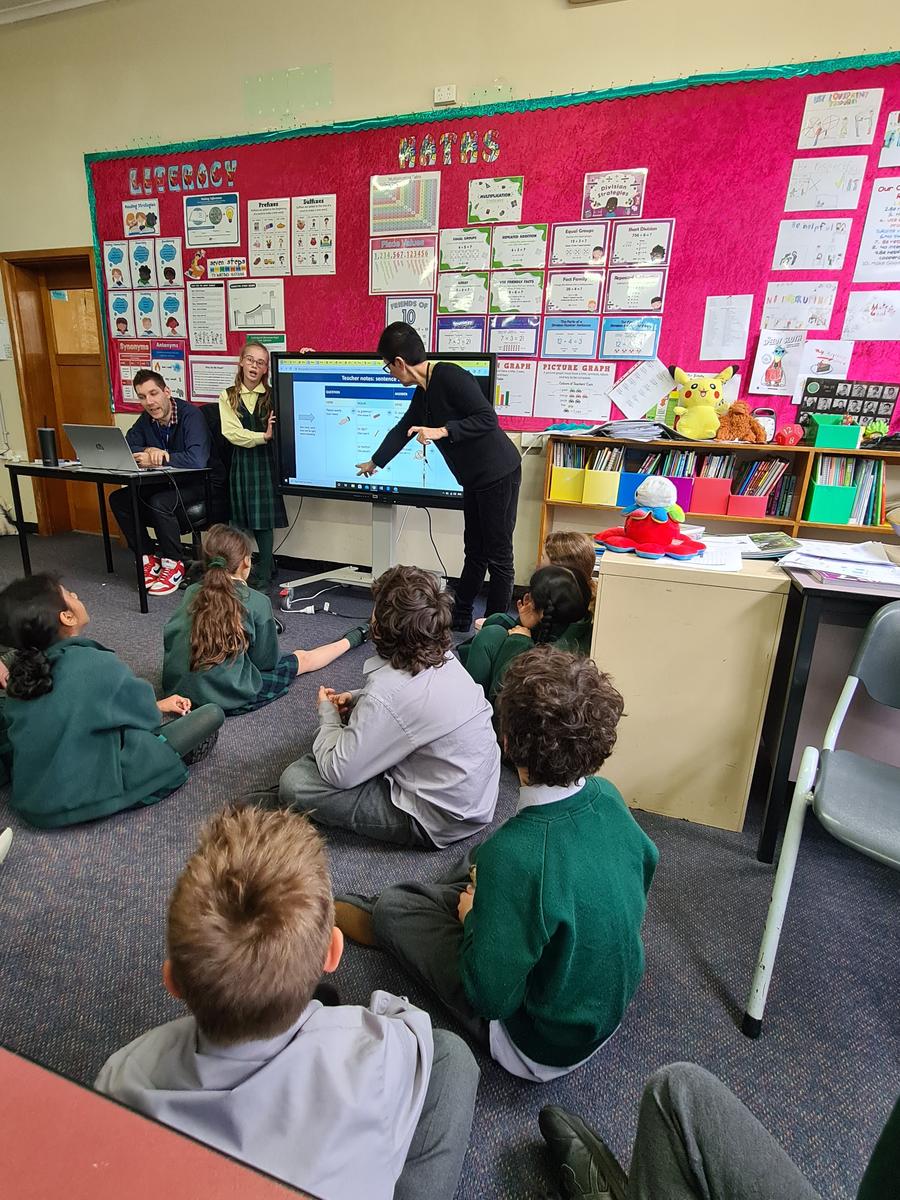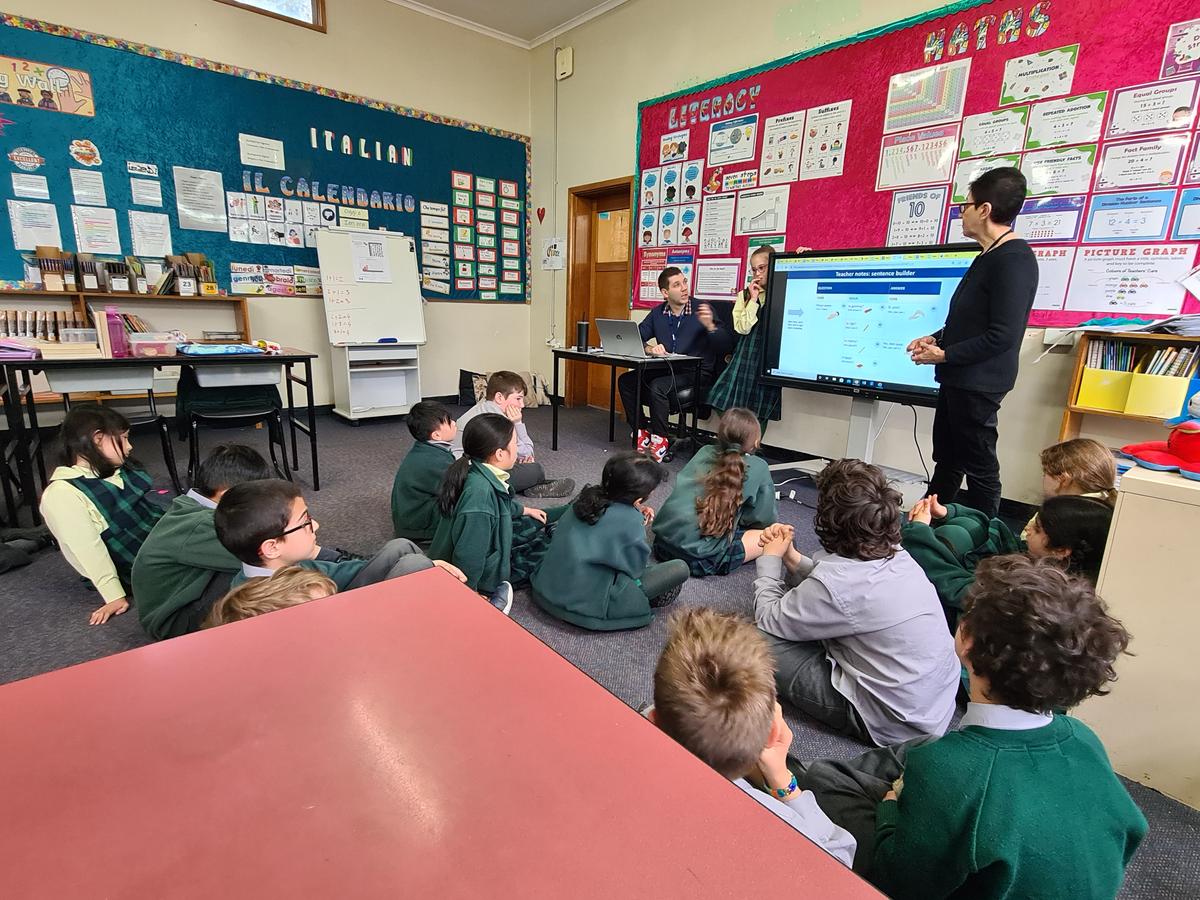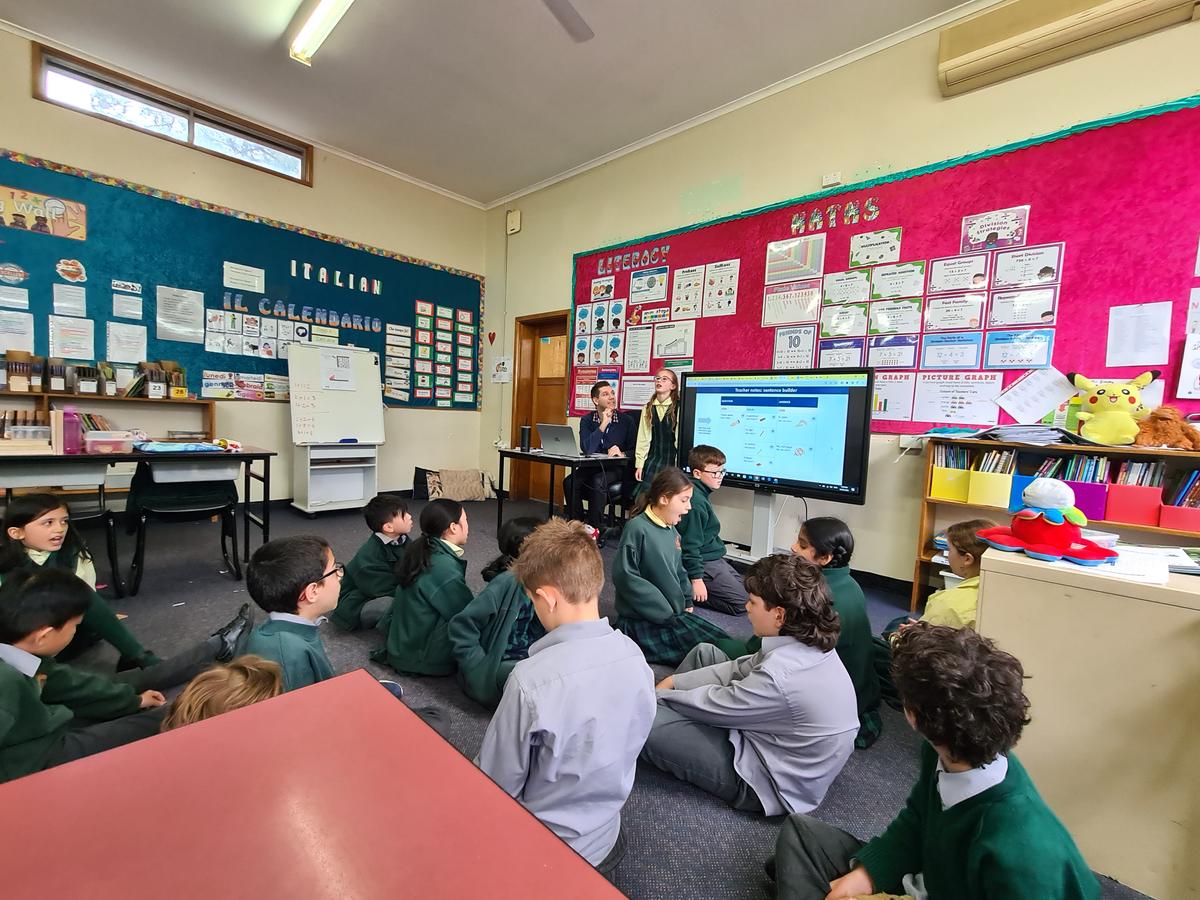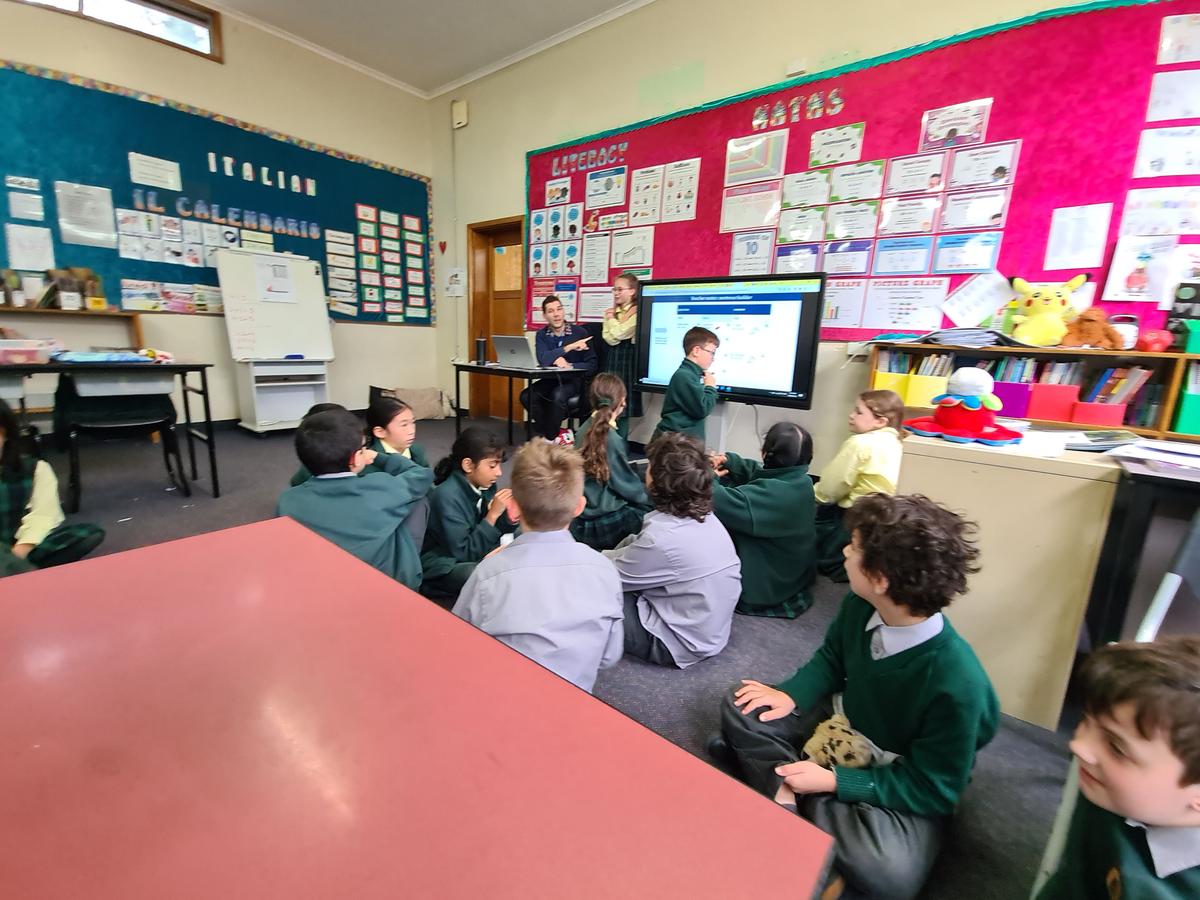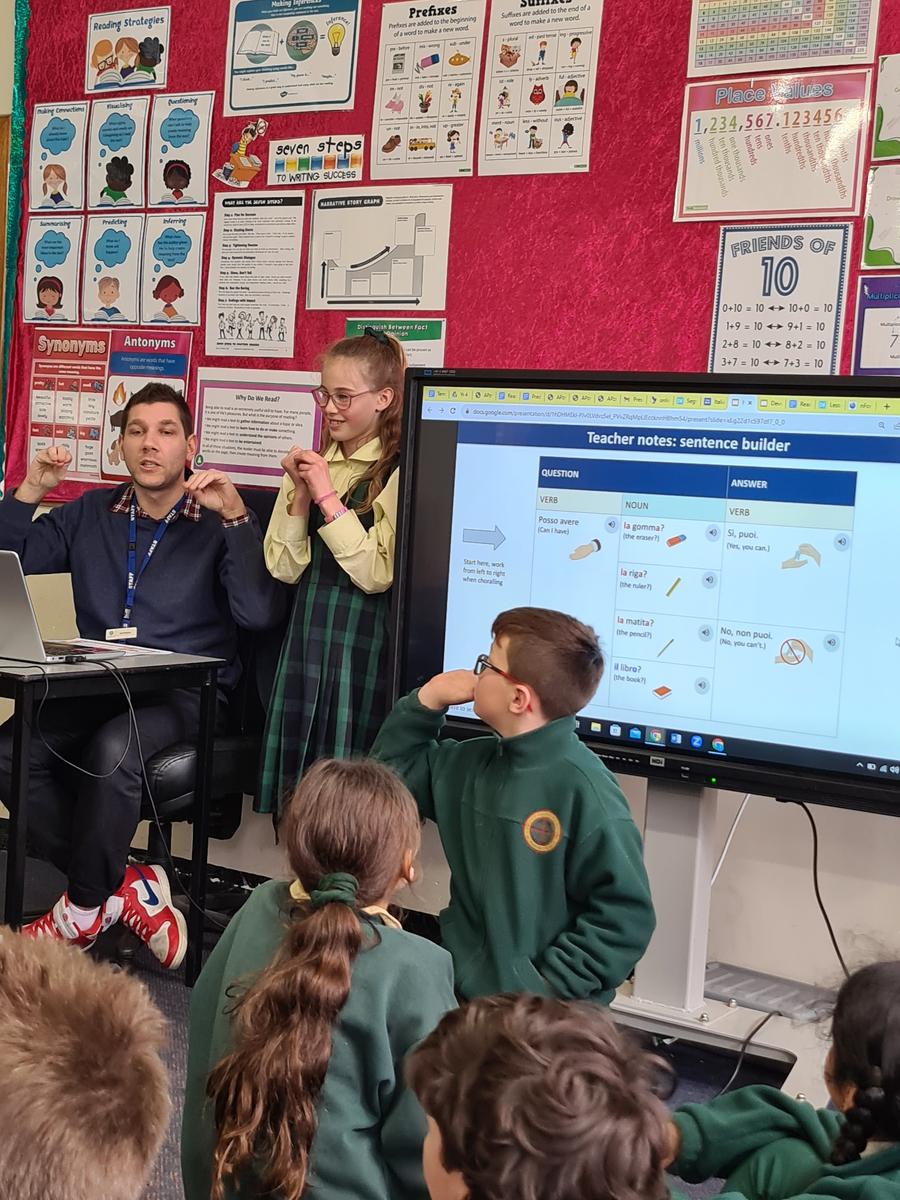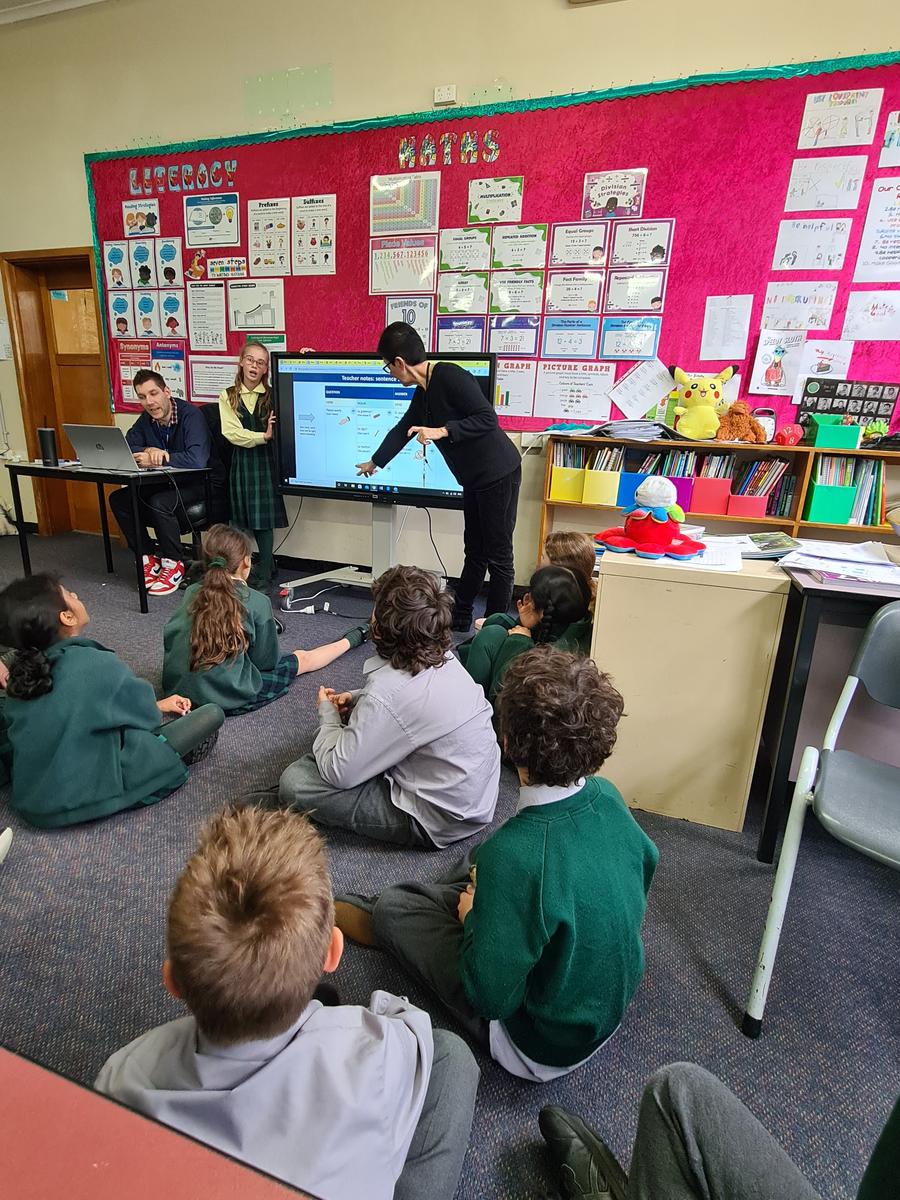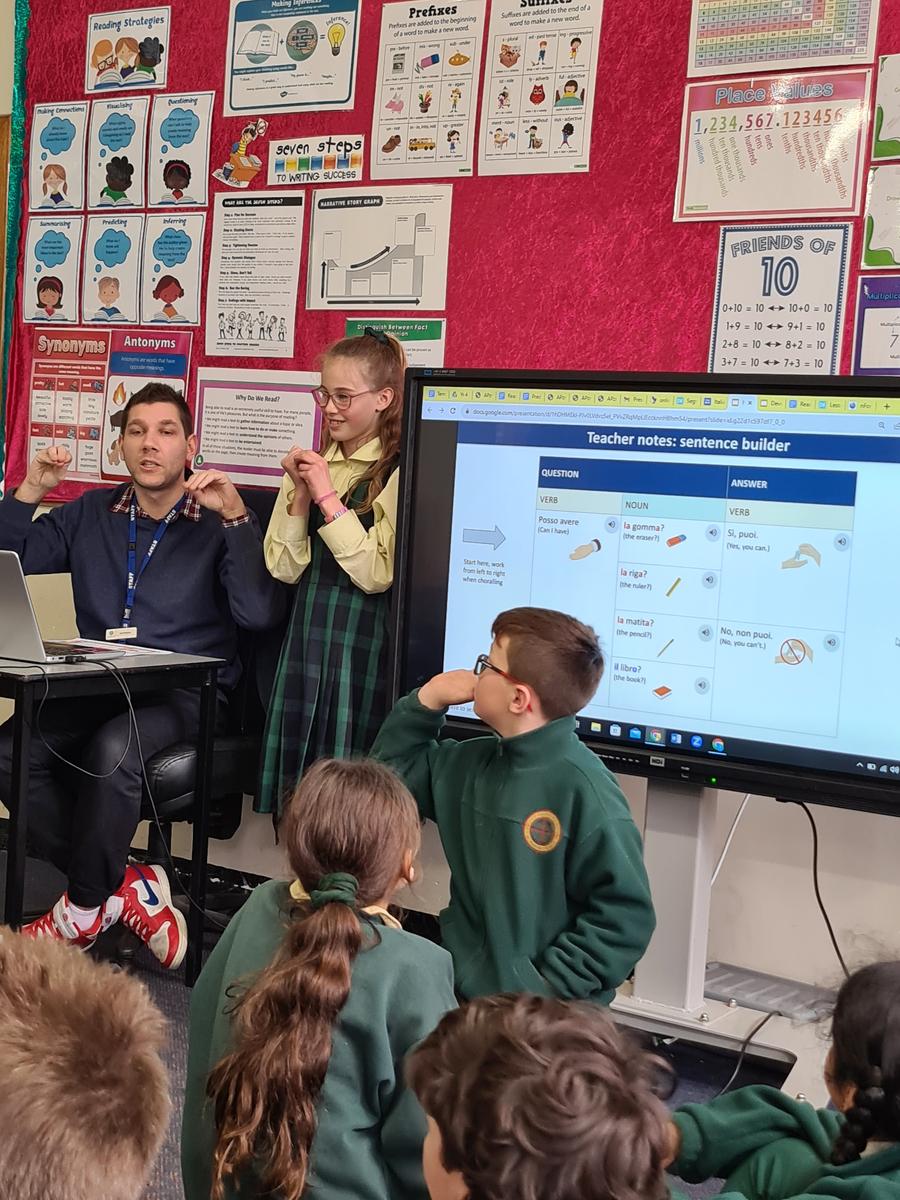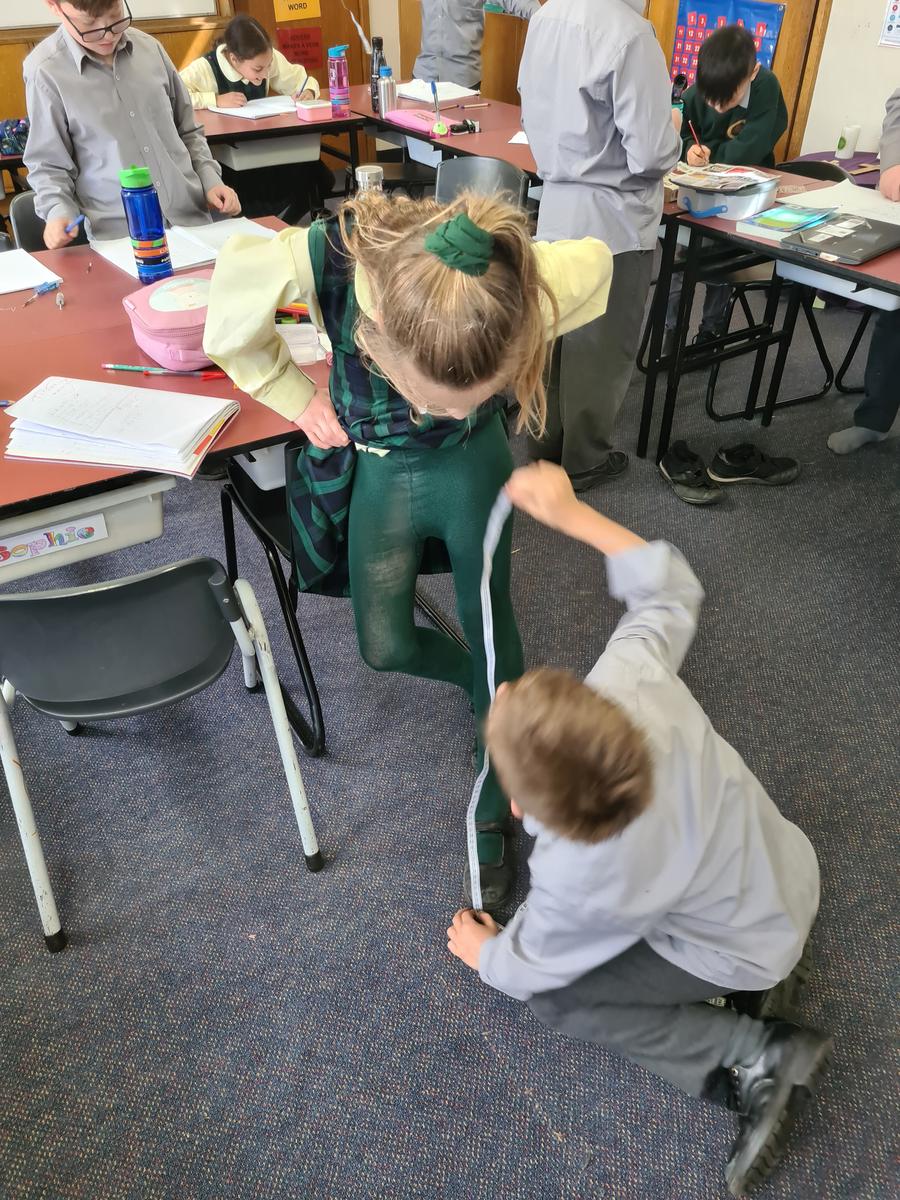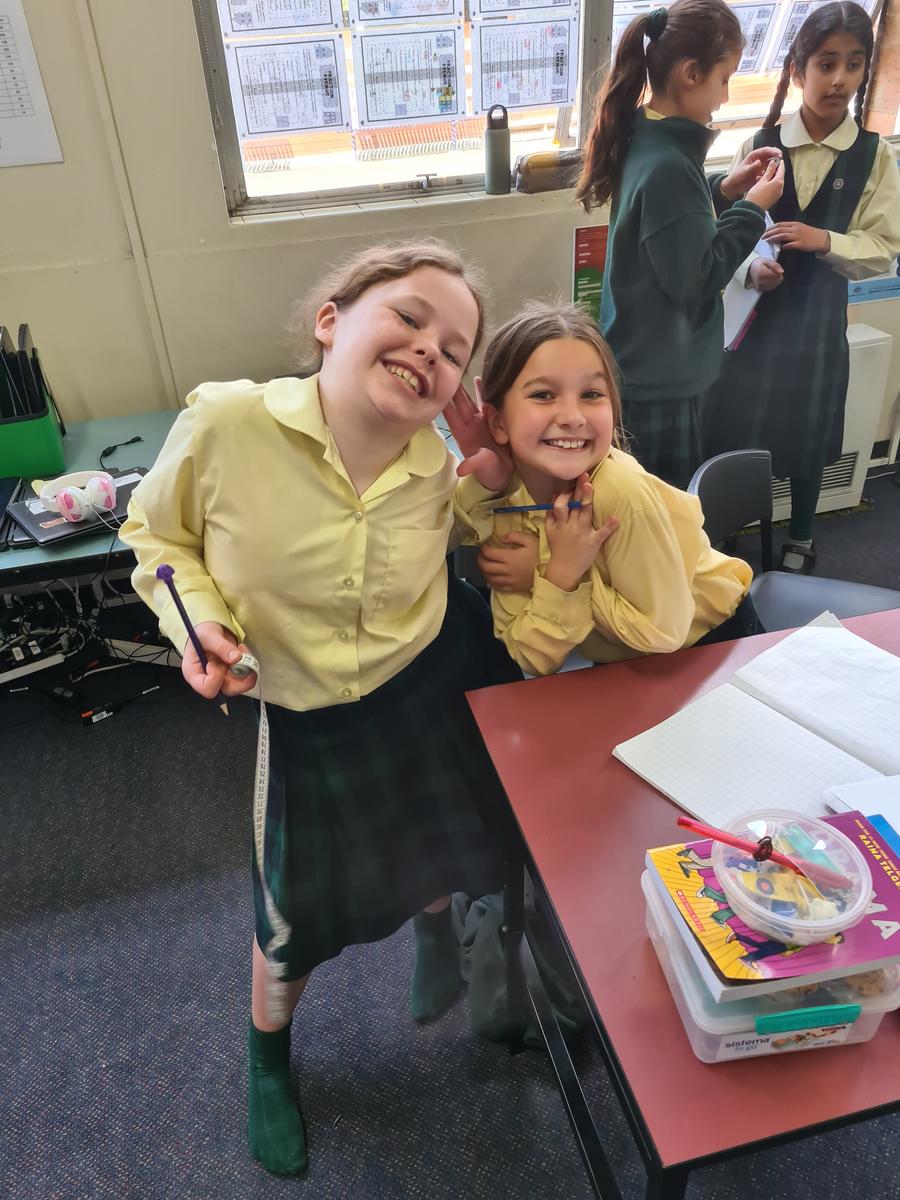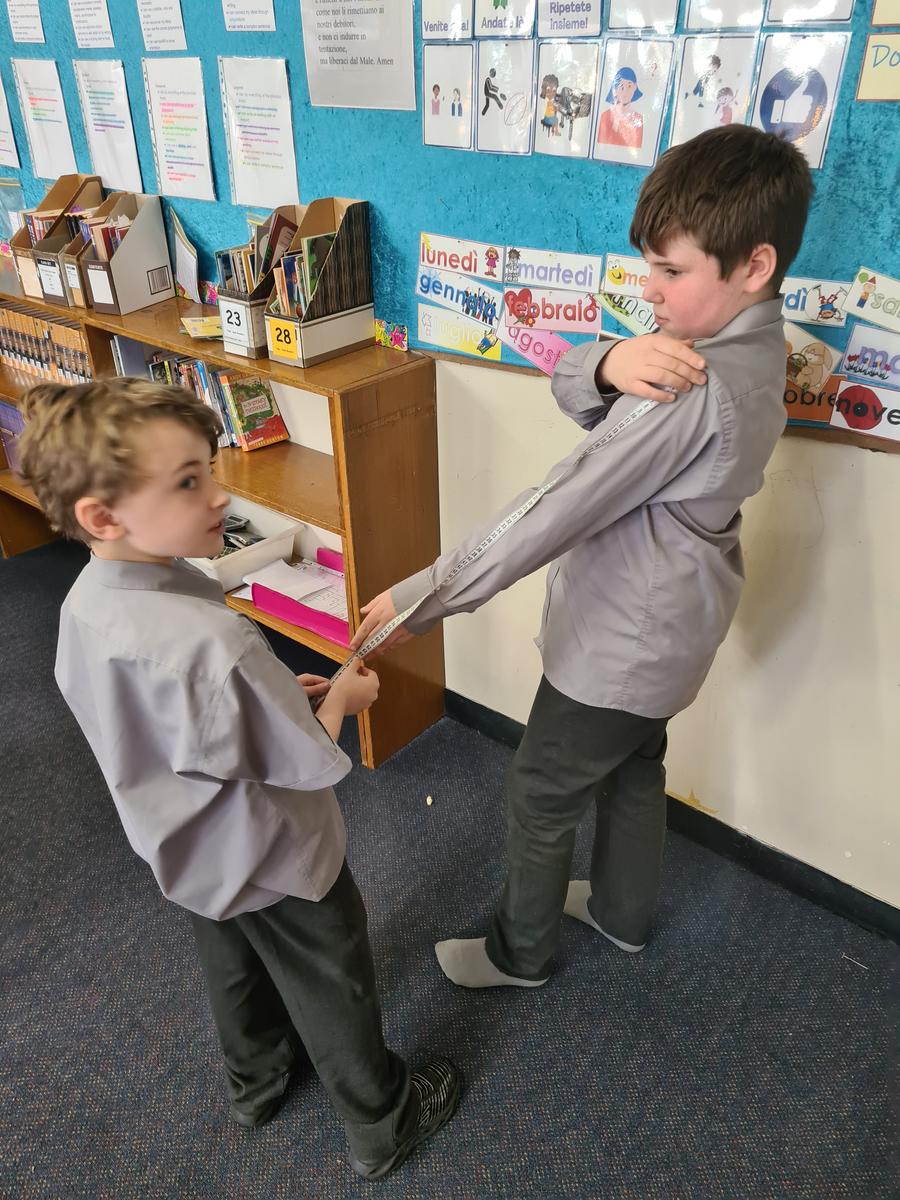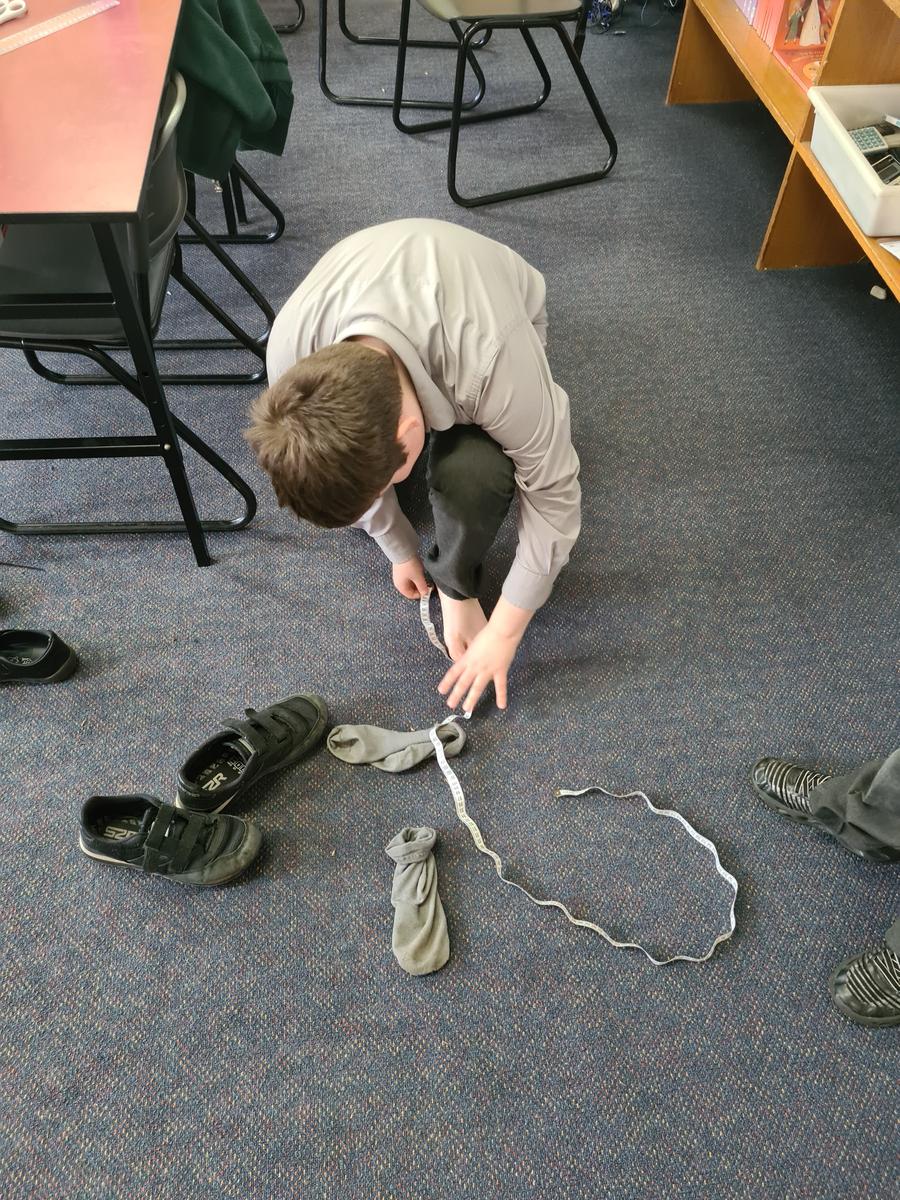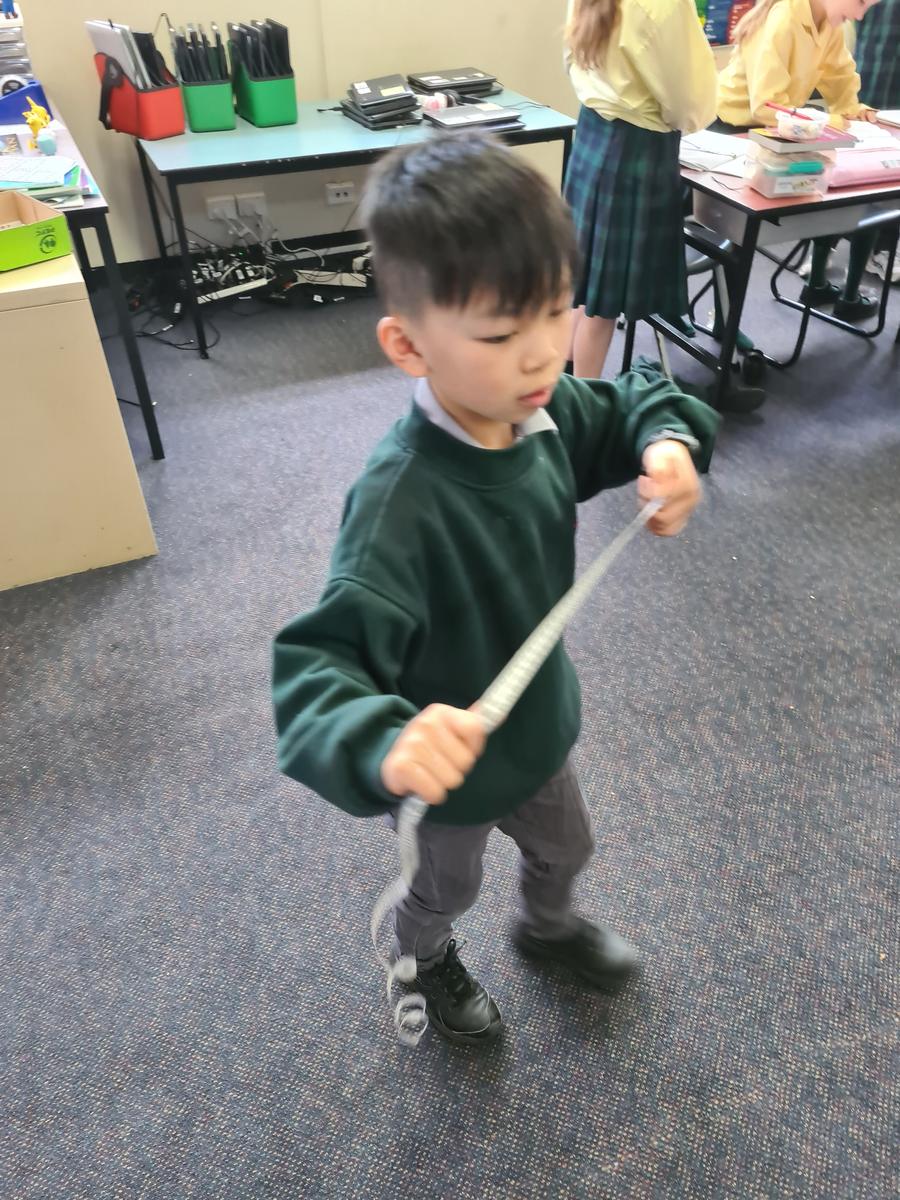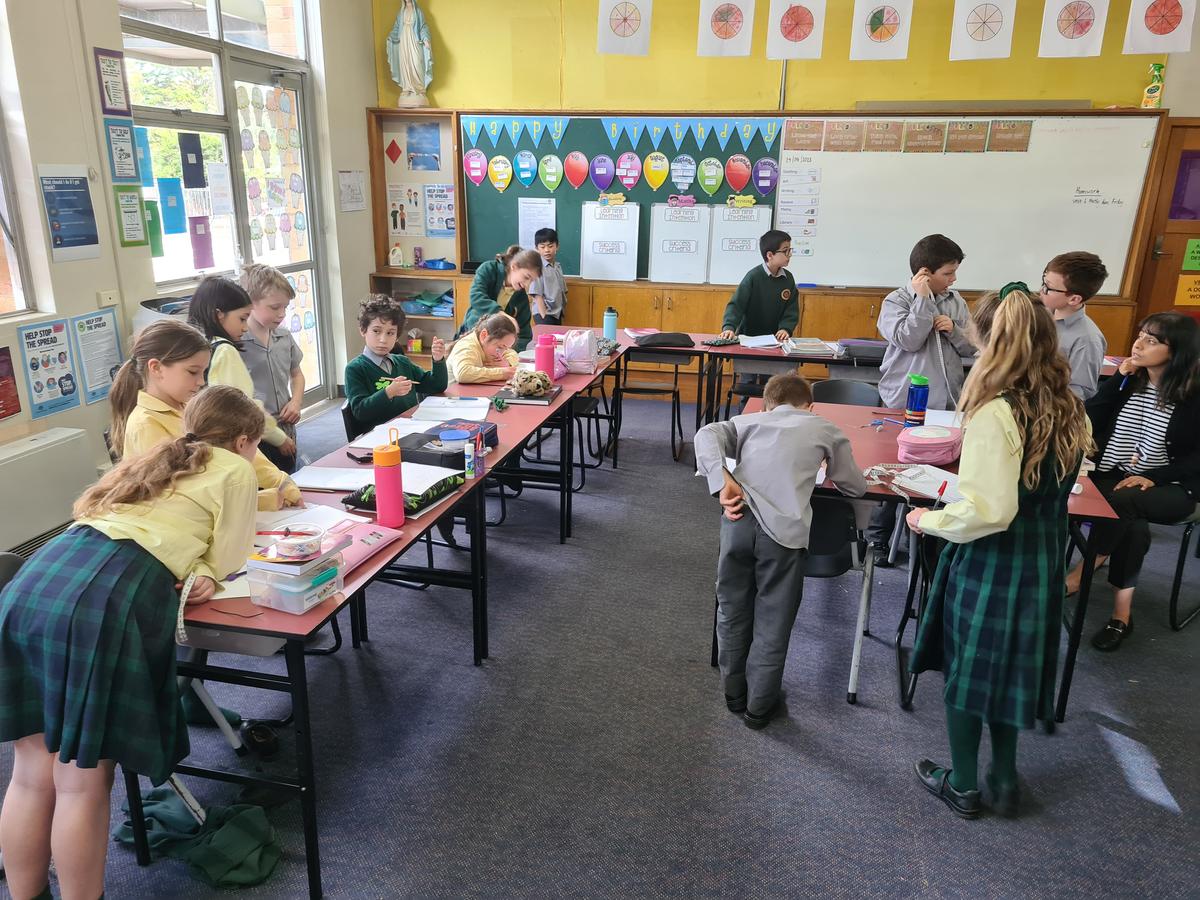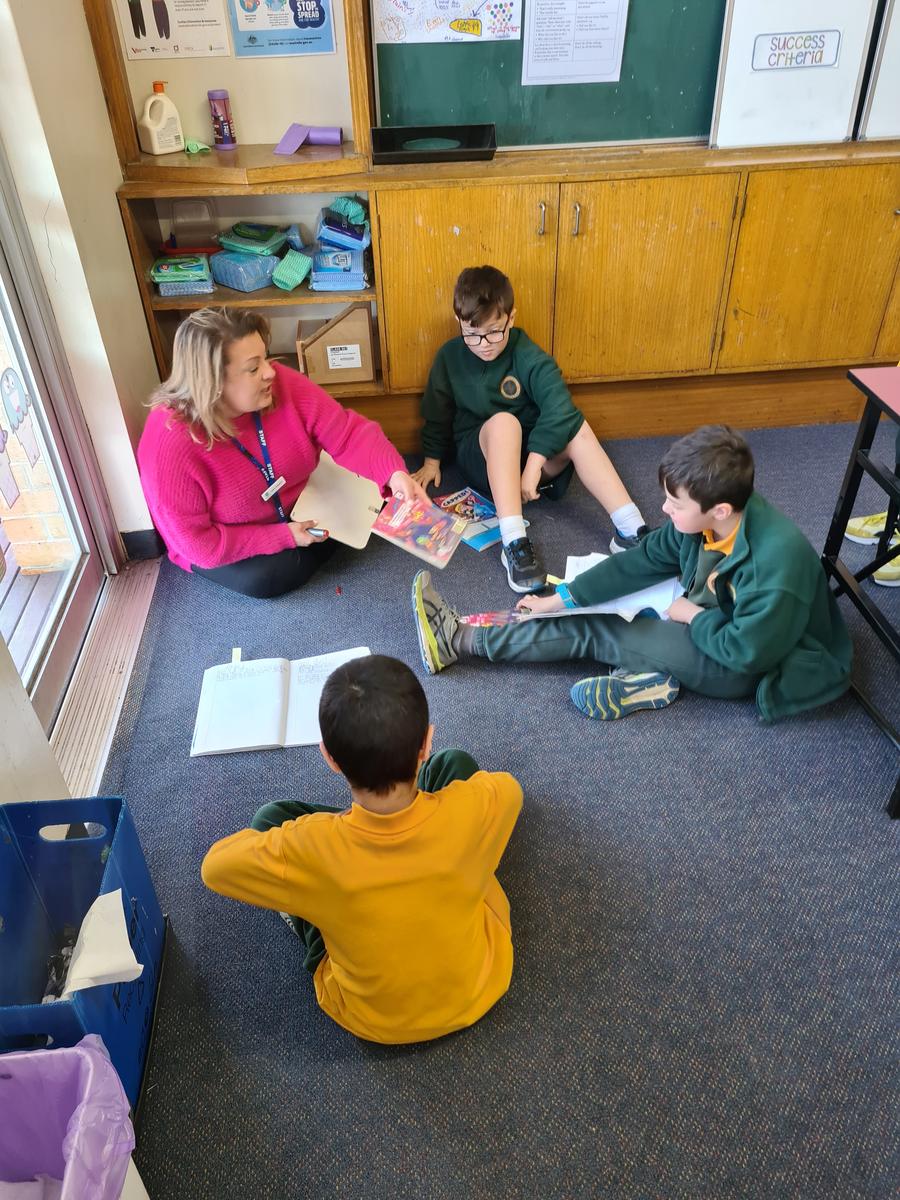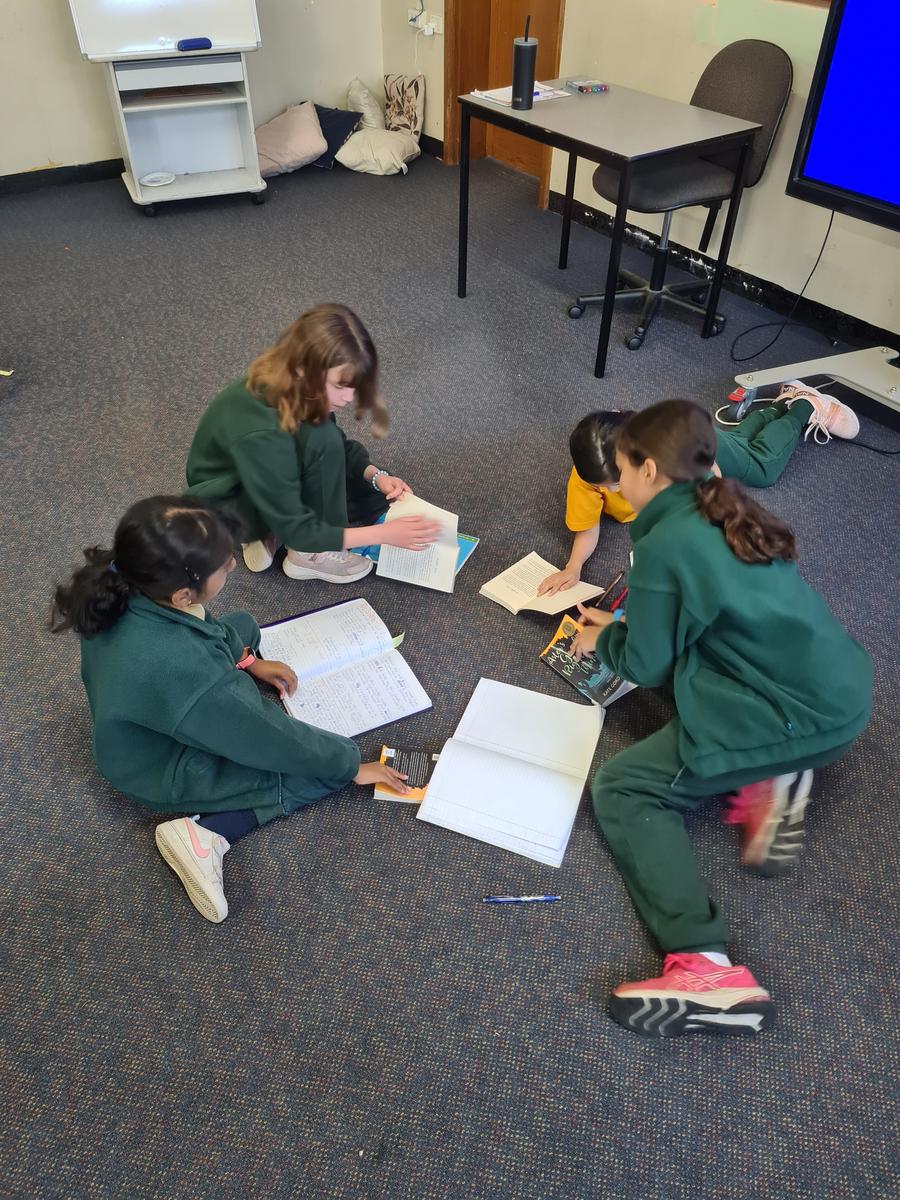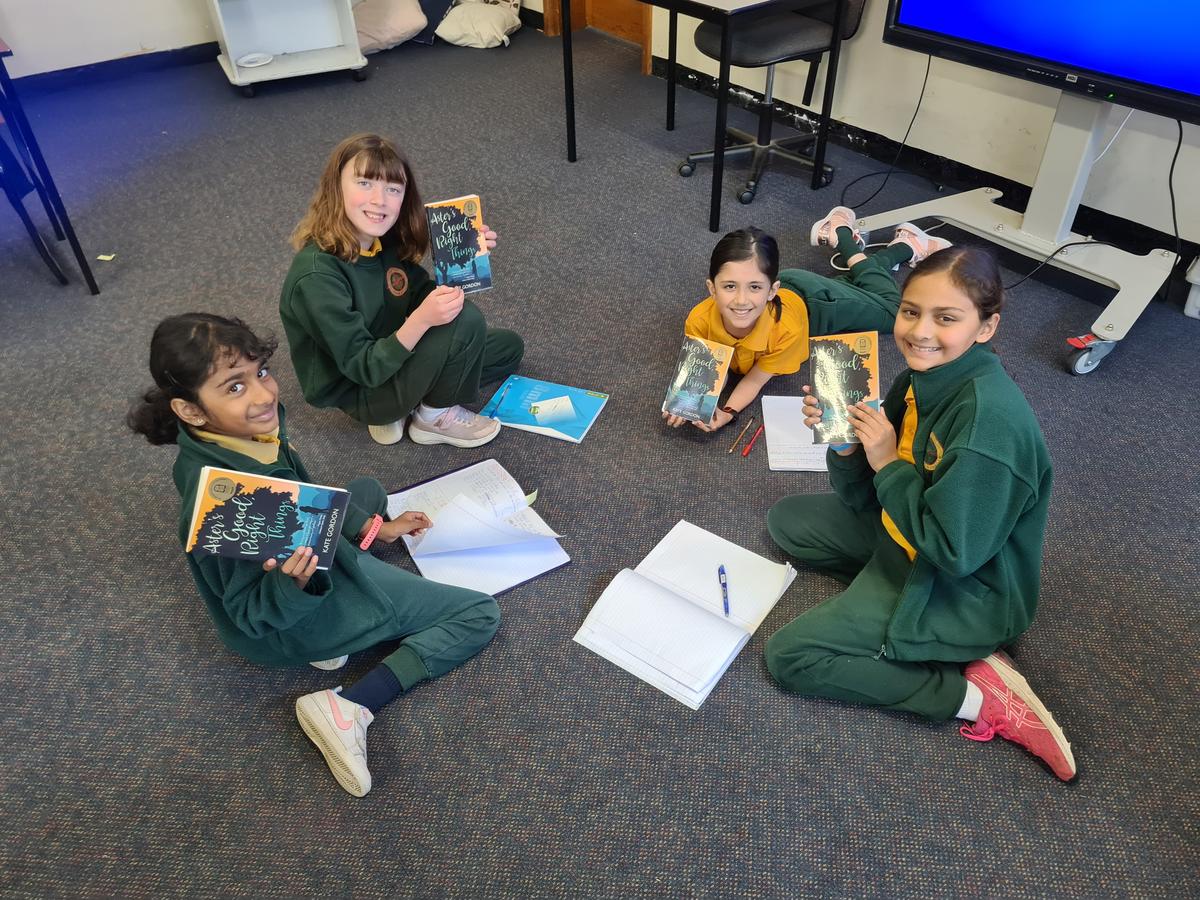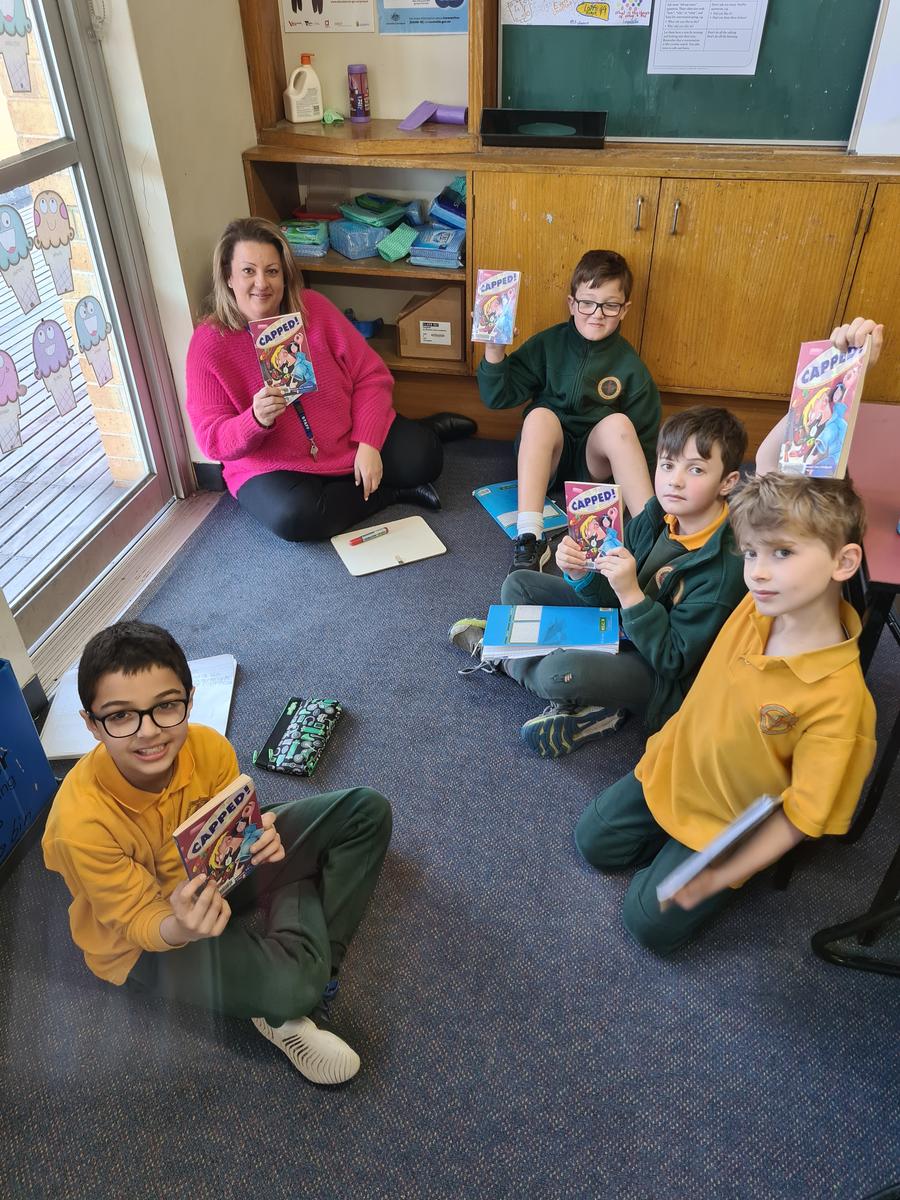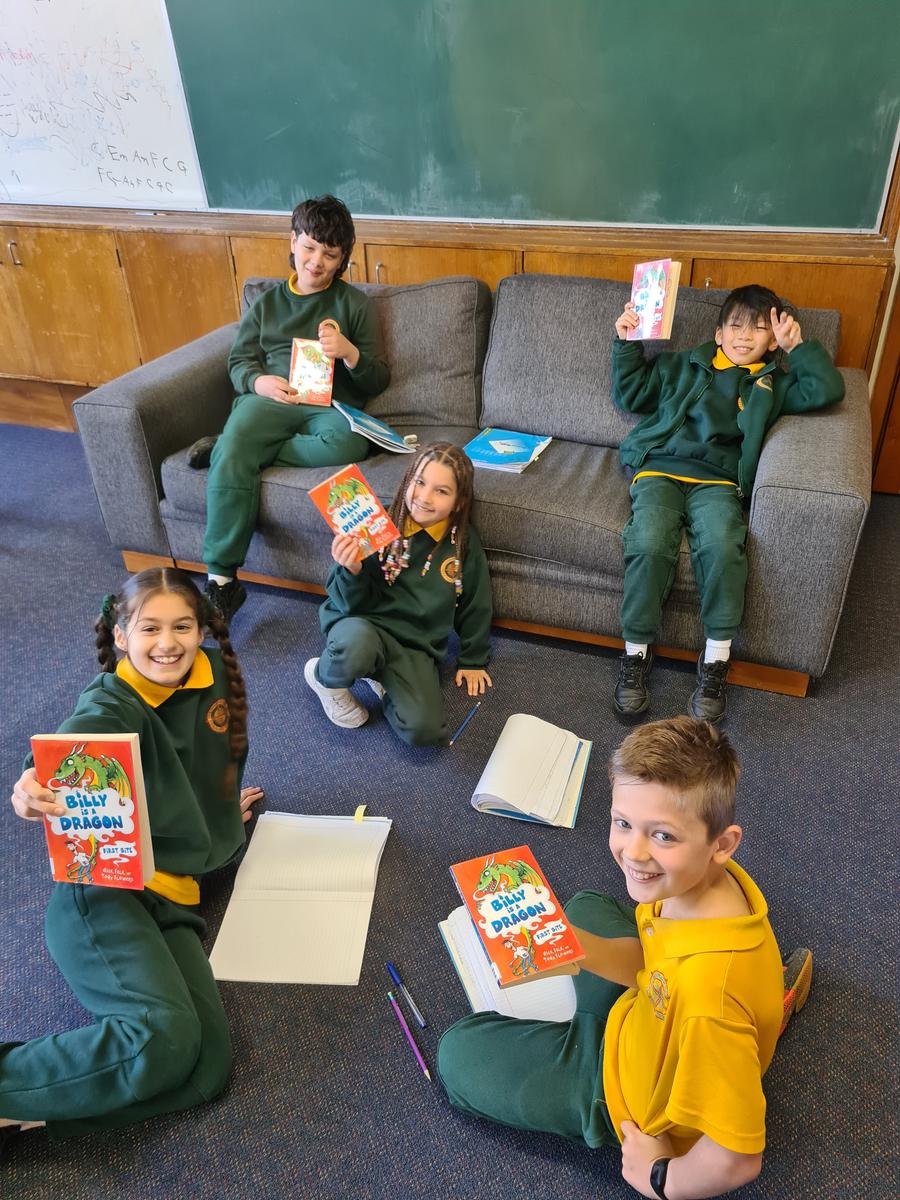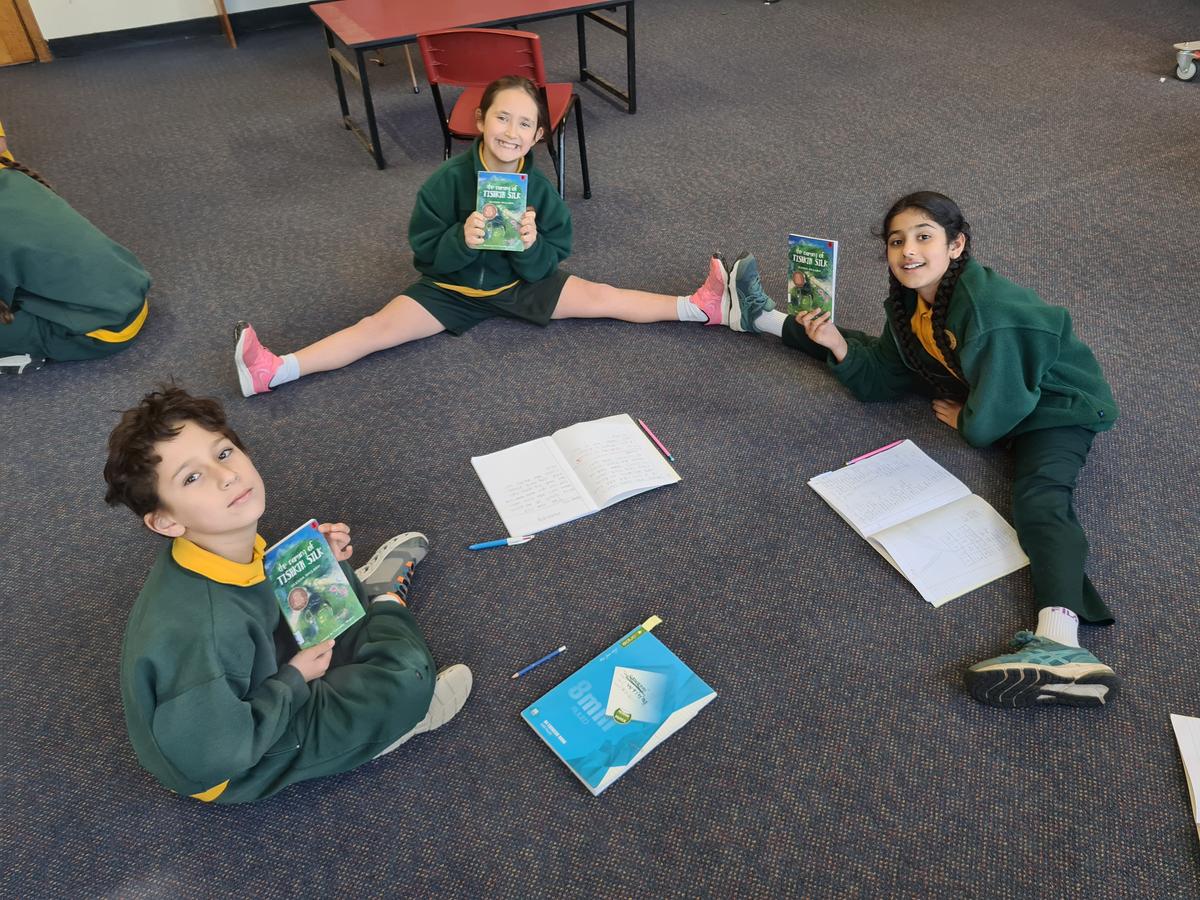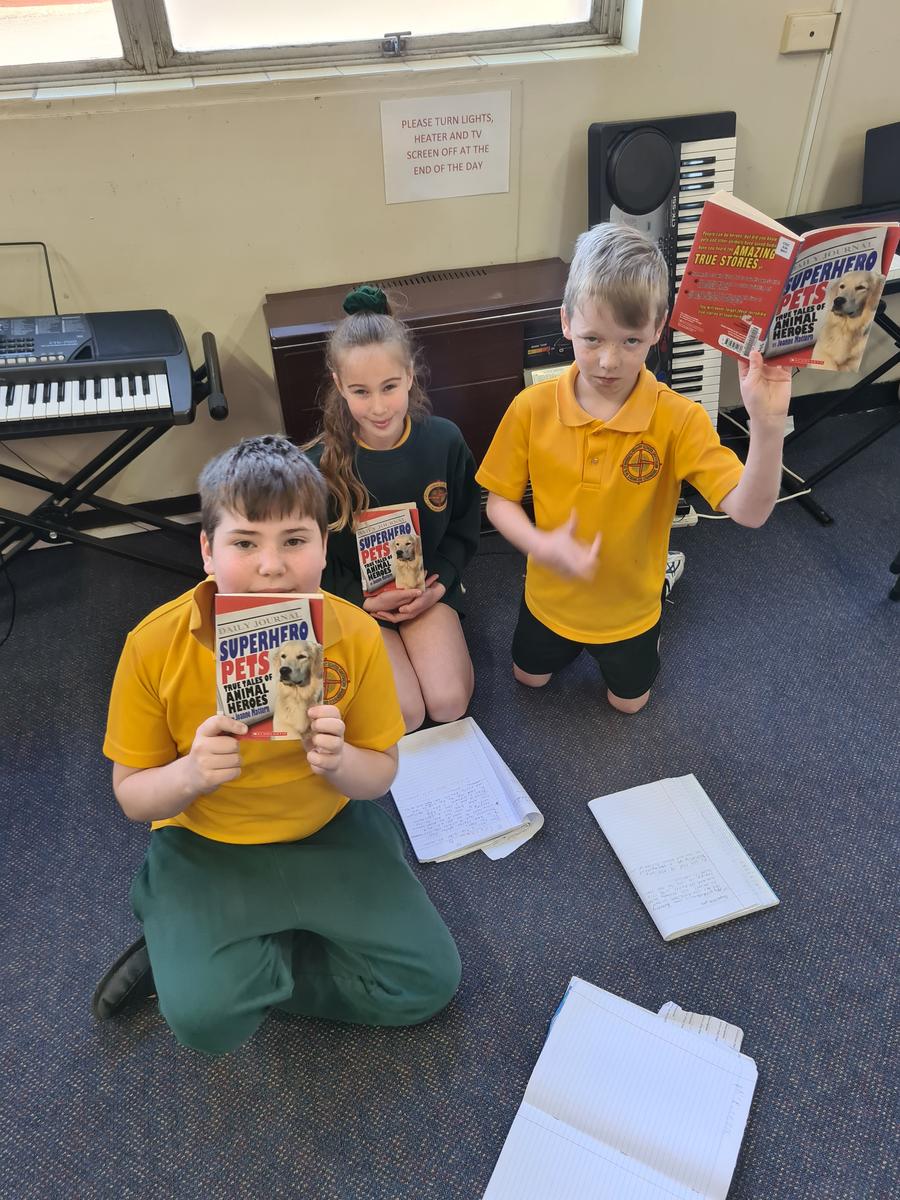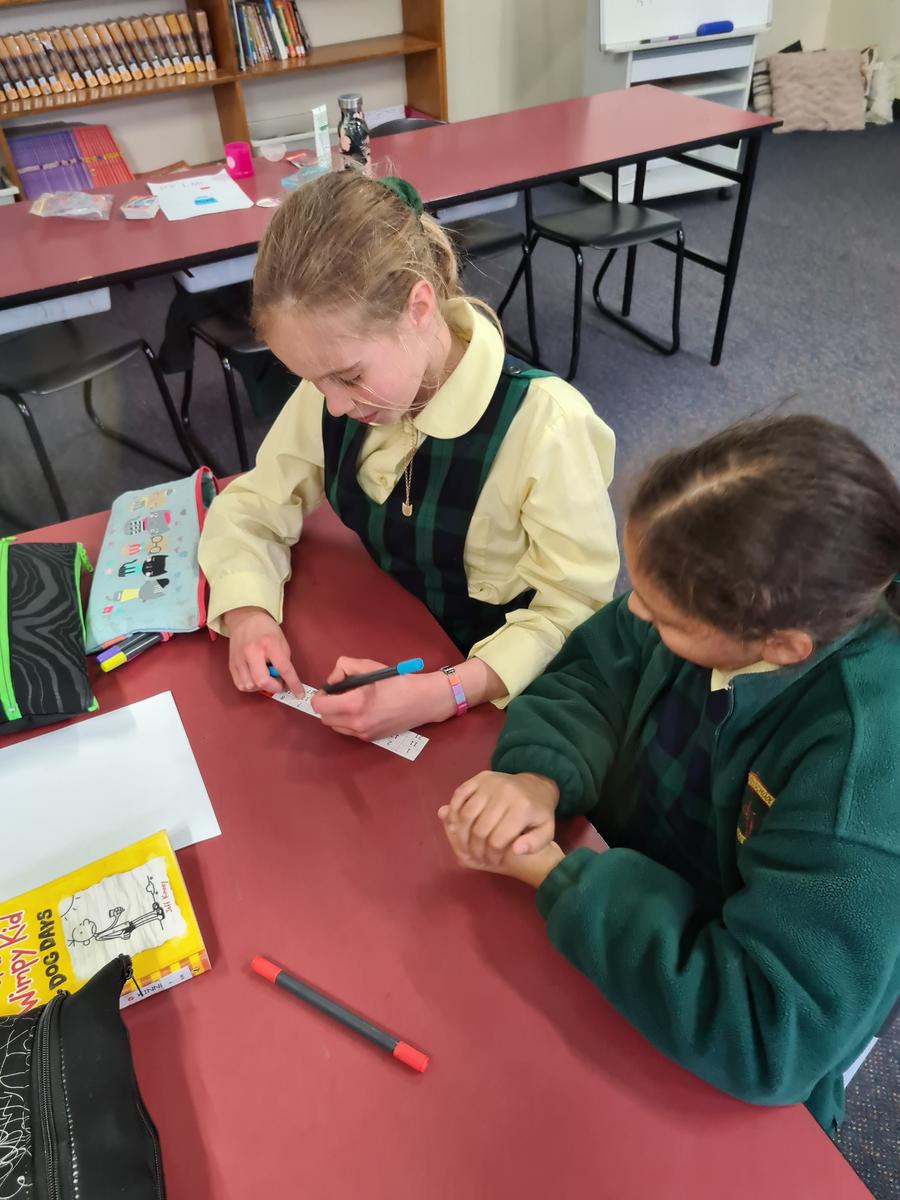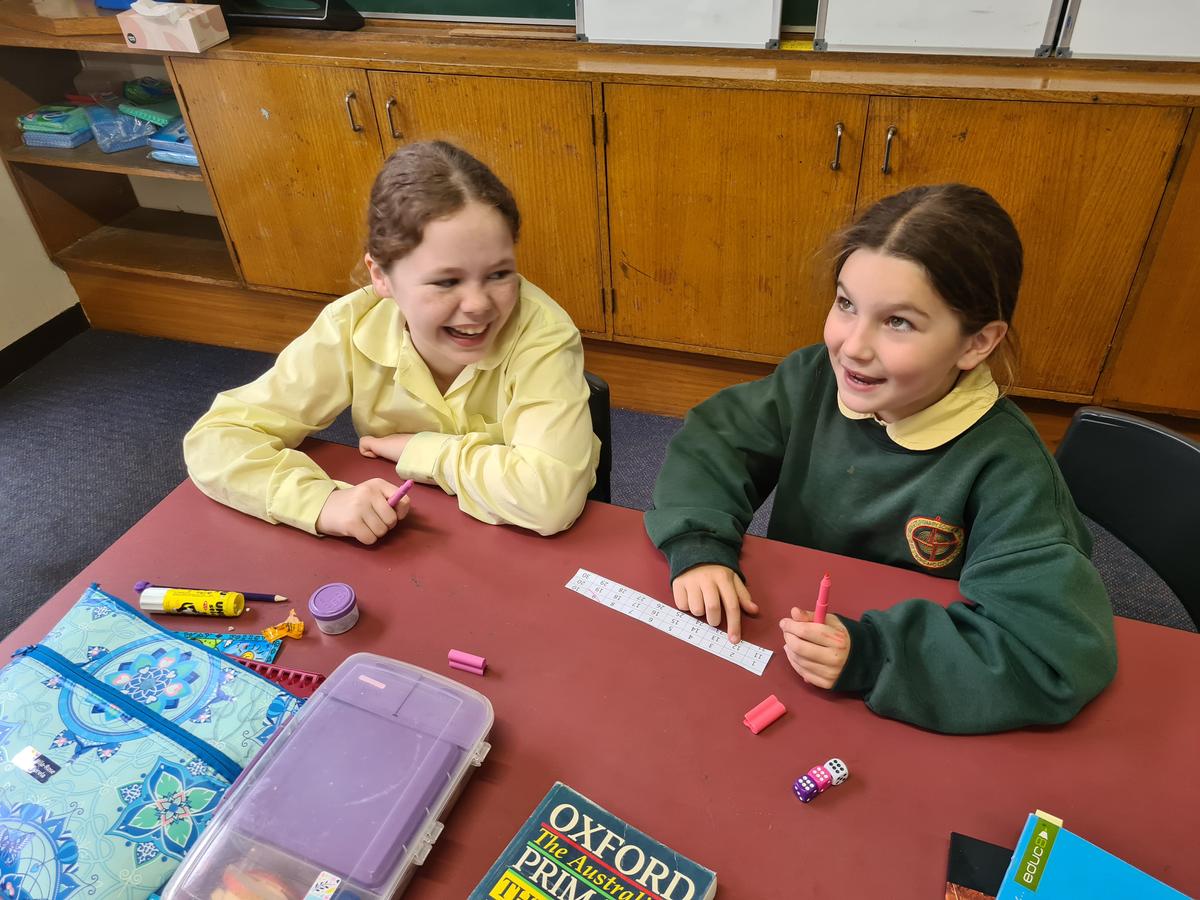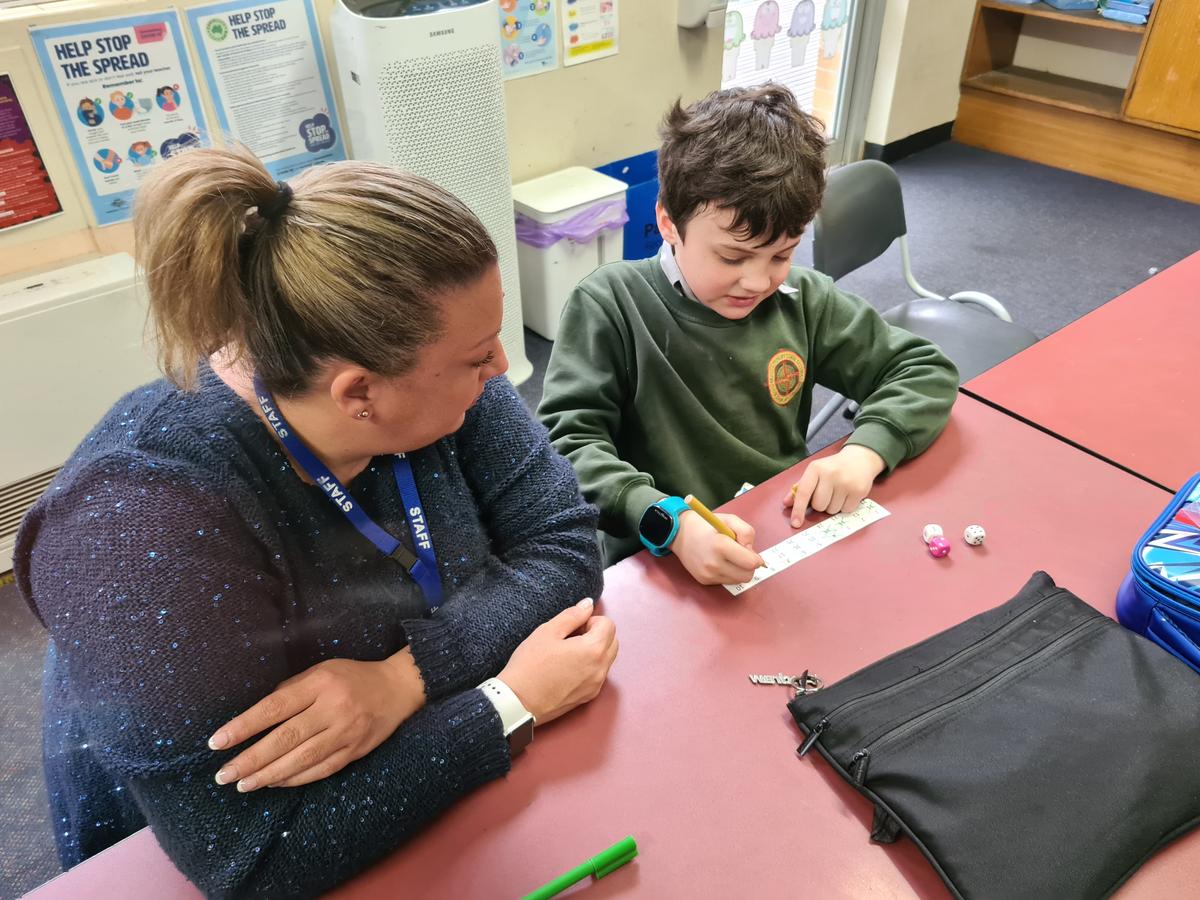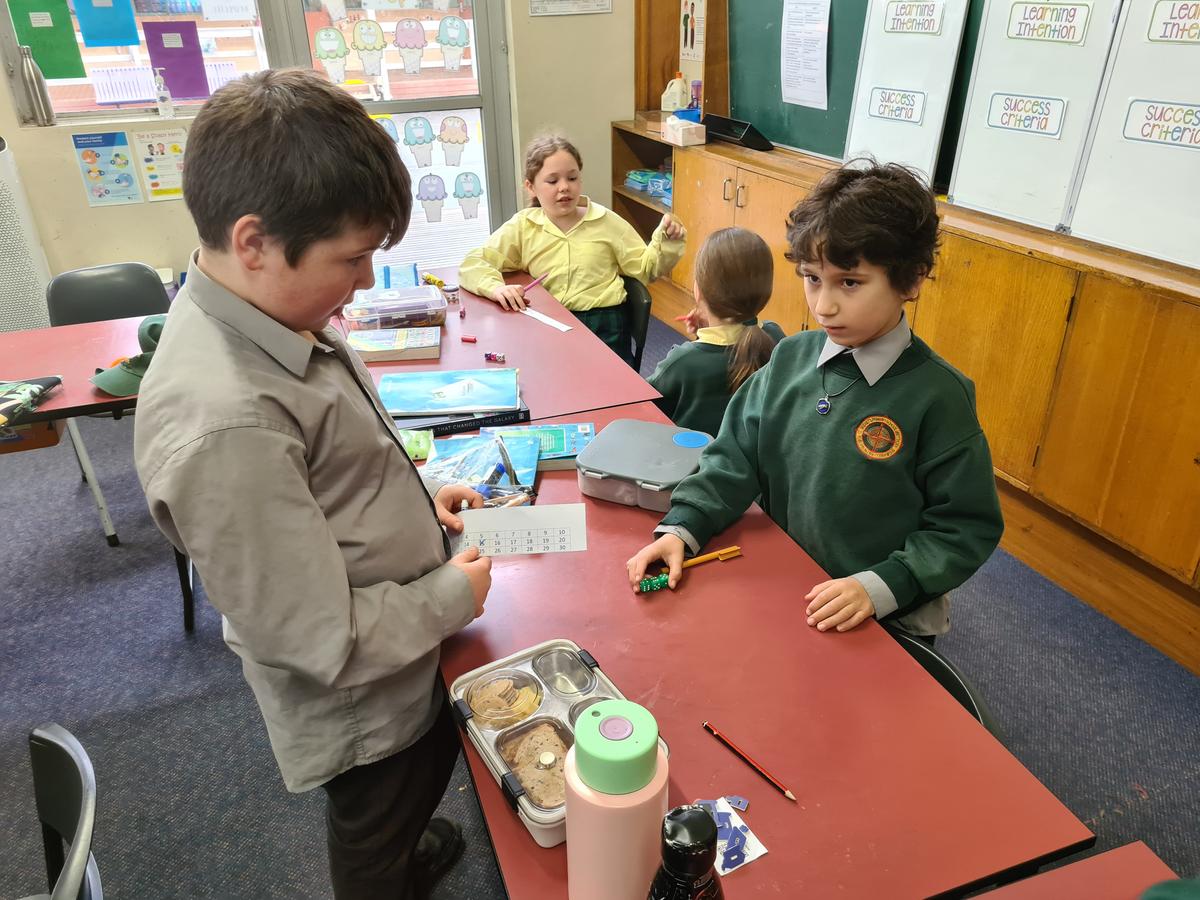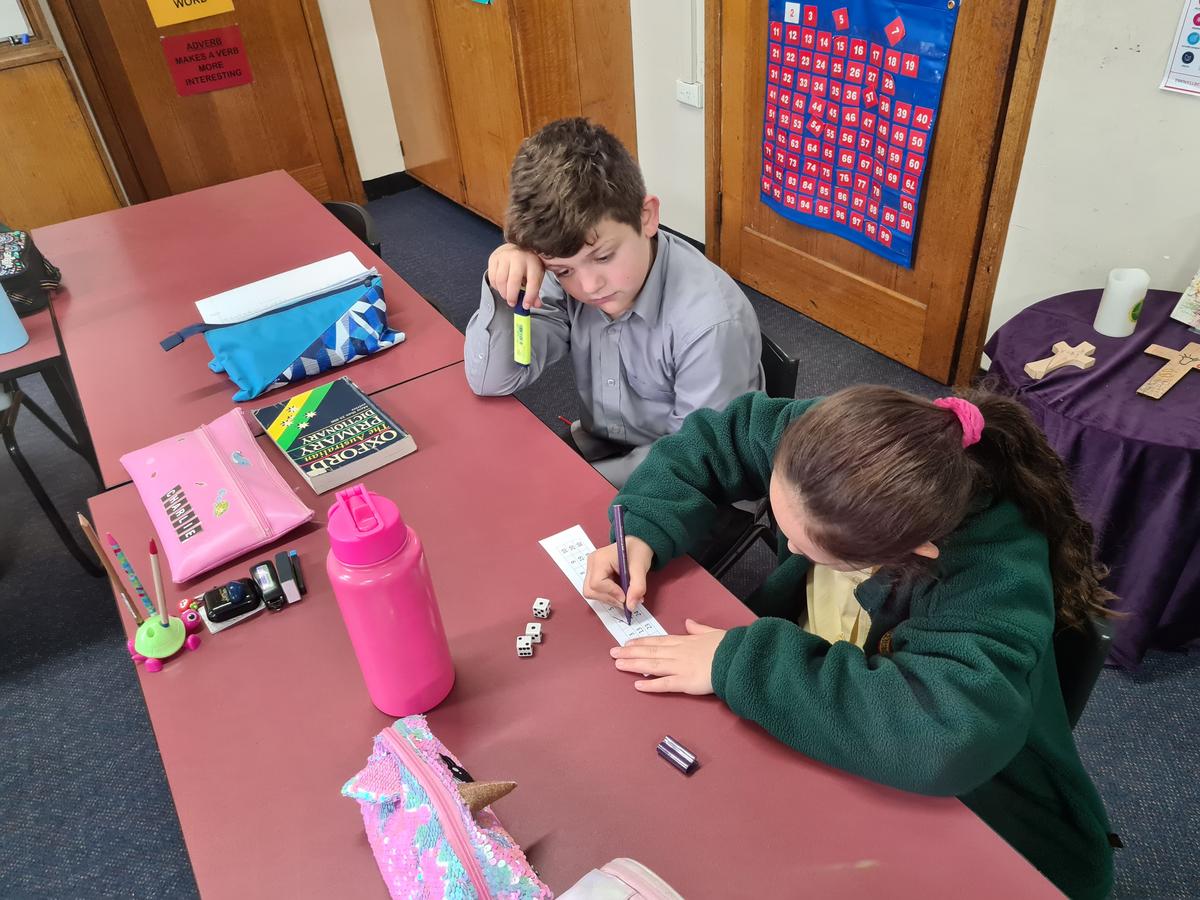Year 3/4
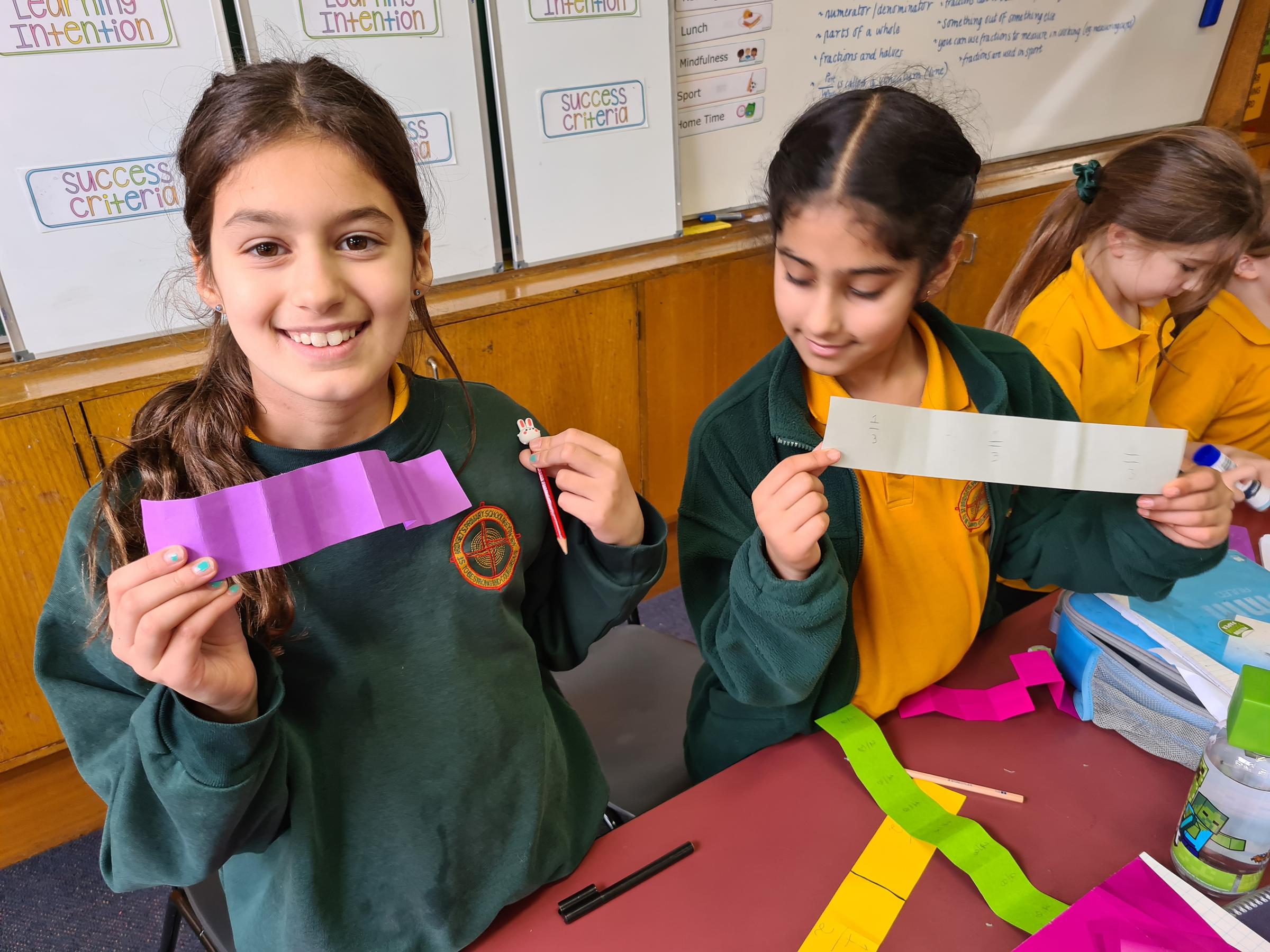
Our new topic in Inquiry for Term 3 was Connections. Our first lesson was looking at the connections in our lives such as the connections between people and places but also connections like the ones in our brain.
The students created a mind map which allowed them to make a list of all the connections they could think of in their lives. For example, focusing on the connections between family members, friends, or hobbies.
The mind maps were colourful and presented really well. We have some really creative kids in the 3/4 classroom. Our mind maps are currently on display on the classroom window.
We have been looking at fractions in our Maths lessons recently. The students have been exploring fractions by making their own fractions strips out of paper.
We have also been using the fraction strips to compare different fractions. Using our parts, we could show how as fractions are broken up into more parts the pieces get smaller.
The children can also find fractions of a group. We learned how to use division to find a quarter of 60.
Yoga is a great way of getting up out of our seats and getting some exercise. We have been doing a bit of yoga in the mornings before we start our work. It is helpful to get the kids prepared for the day ahead. It also relaxes the mind and helps with building up strength and flexibility. In addition, it is a great way to manage stress. There are many videos online that provide easy to follow yoga sessions for kids. It is great to see all the kids getting up and giving it a go.
We are a school that proudly teaches a language other than English, we also teach Italian. Every week, the students are lucky enough to have Italian lessons with Signora, but we also teach Italian in the everyday classroom too. Every morning, the students, along with myself, will practise a particular area of Italian words and phrases. This term, we are learning how to ask “Can I please have…” and how to respond to that question.
It is very important that the students practise more than once a week, that way they will remember a lot more of what they are learning.
We are very lucky to have a library at our school, filled with some wonderful books.
Once a week, the students go to the library where they can borrow a wide range of books.
We usually have enough time to explore the books, have a read of them and even share a story.
I love reading and it is so great to see that the students love it too. I am always amazed at how many different books the children are borrowing.
The library is looked after by Mrs. Dunn who continues to update our catalogue with new books constantly.
This term we looked at Measurement. We started by looking at length. The children used their knowledge of what they know about centimetres to make estimates about how long each of their body parts are. Next, they used a measuring tape to actually measure their body parts and compare their measurements to their estimates.
The students had a great time measuring each other and making estimates.
We will also be looking at Mass soon. The kids will use their estimating skills to guess how heavy things are and then weigh them.
Reading circles is an activity that we do in small groups. Each group of students has a book that they will take turns reading. The idea behind this is to discuss literature and learn new reading strategies.
Over the past 2 weeks, the students have been practising how to predict while they read. Predicting is a good way for kids to connect their existing knowledge with new information to create meaning from the text.
Good readers can make predictions before reading the book, during reading and then after they finish the book. The students have been doing a great job creating predictions and sharing them with their peers.
We love Maths games in Yr 3/4, not only are they fun but they are also educational. The best type of games are those that are a mixture of skill and chance based. Recently, I taught the students a game called Terminator 2, which we learned at a Maths Professional Development day we went to.
The game is designed to help students practise the 4 operations, addition, subtraction, multiplication and division. The best part is, children can challenge themselves to go for harder sums if they want to.
The game is quite simple. The children received a board that looks like this:
1 | 2 | 3 | 4 | 5 | 6 | 7 | 8 | 9 | 10 |
11 | 12 | 13 | 14 | 15 | 16 | 17 | 18 | 19 | 20 |
21 | 22 | 23 | 24 | 25 | 26 | 27 | 28 | 29 | 30 |
They need to take turns rolling 3 dice, then, they use the numbers that were rolled to create a sum. The answer correlates to the numbers on their chart. If they can make the answer on the chart, they can cross that number out.
For example, if they roll a 3, 4 and 6 they would do: 3 + 4 + 6 = 13 or they could do 3 x 4 + 6 = 18
They keep going until they can no longer cross out any numbers.
Kind regards
Mr Tom Brophy
Year 3/4 Classroom Teacher
